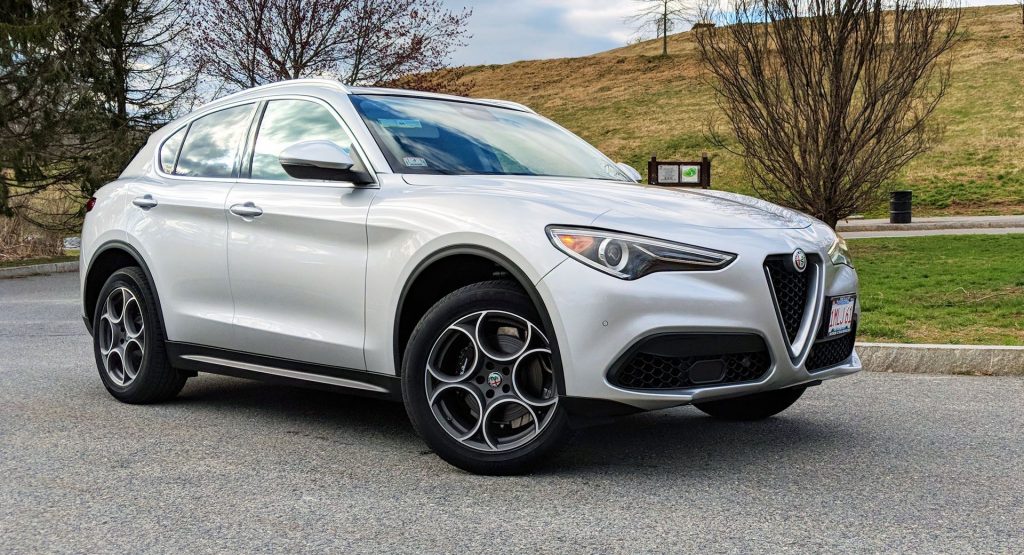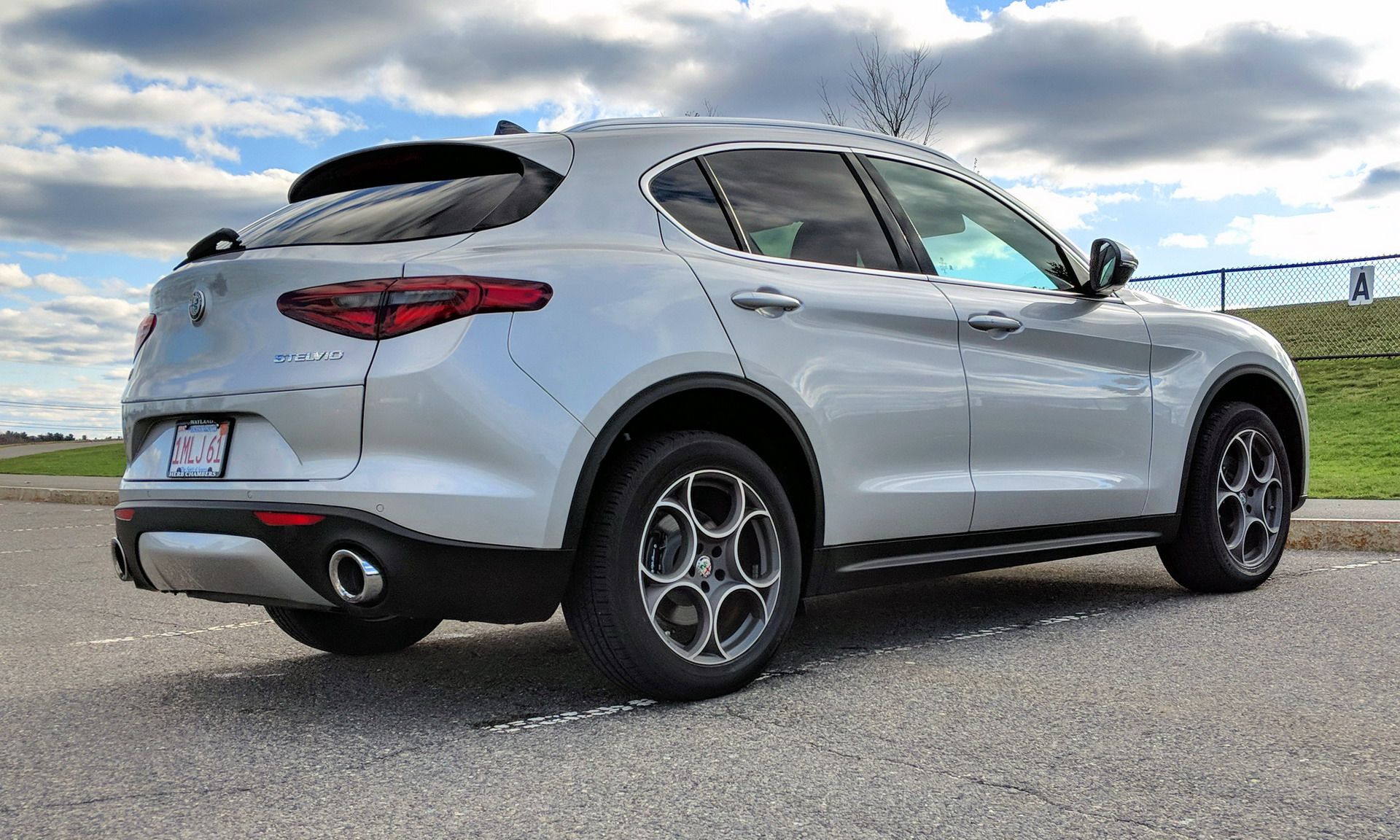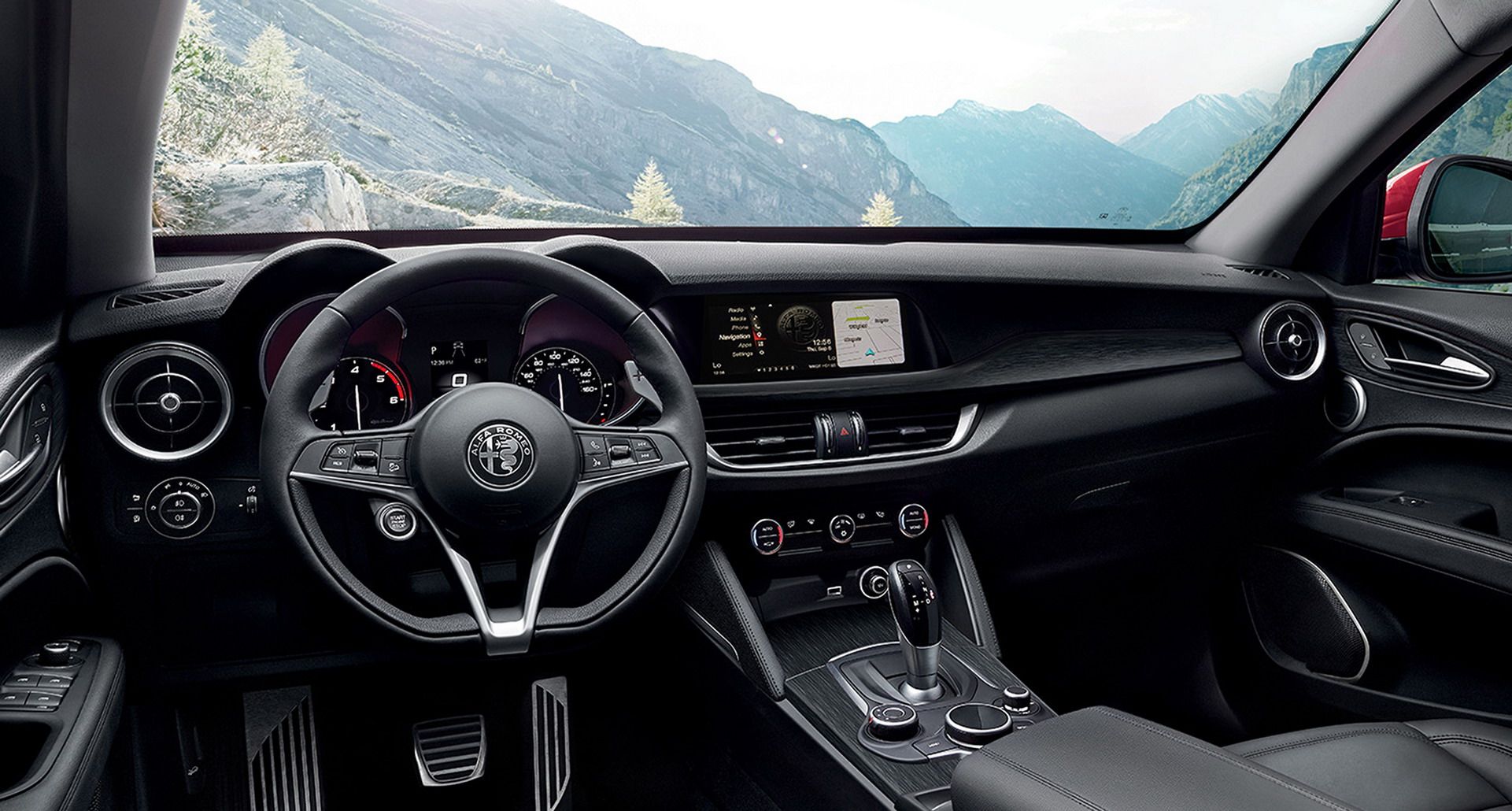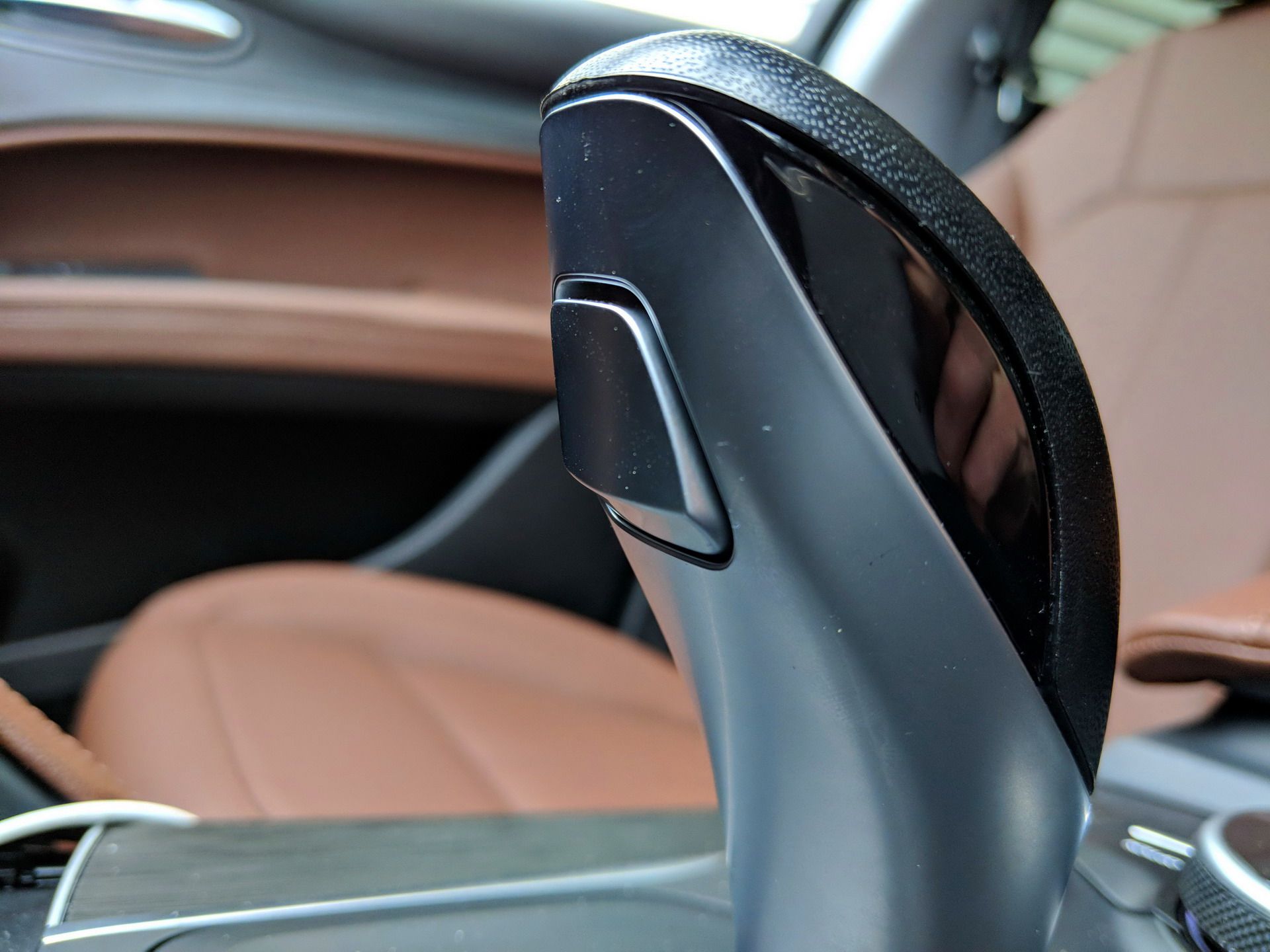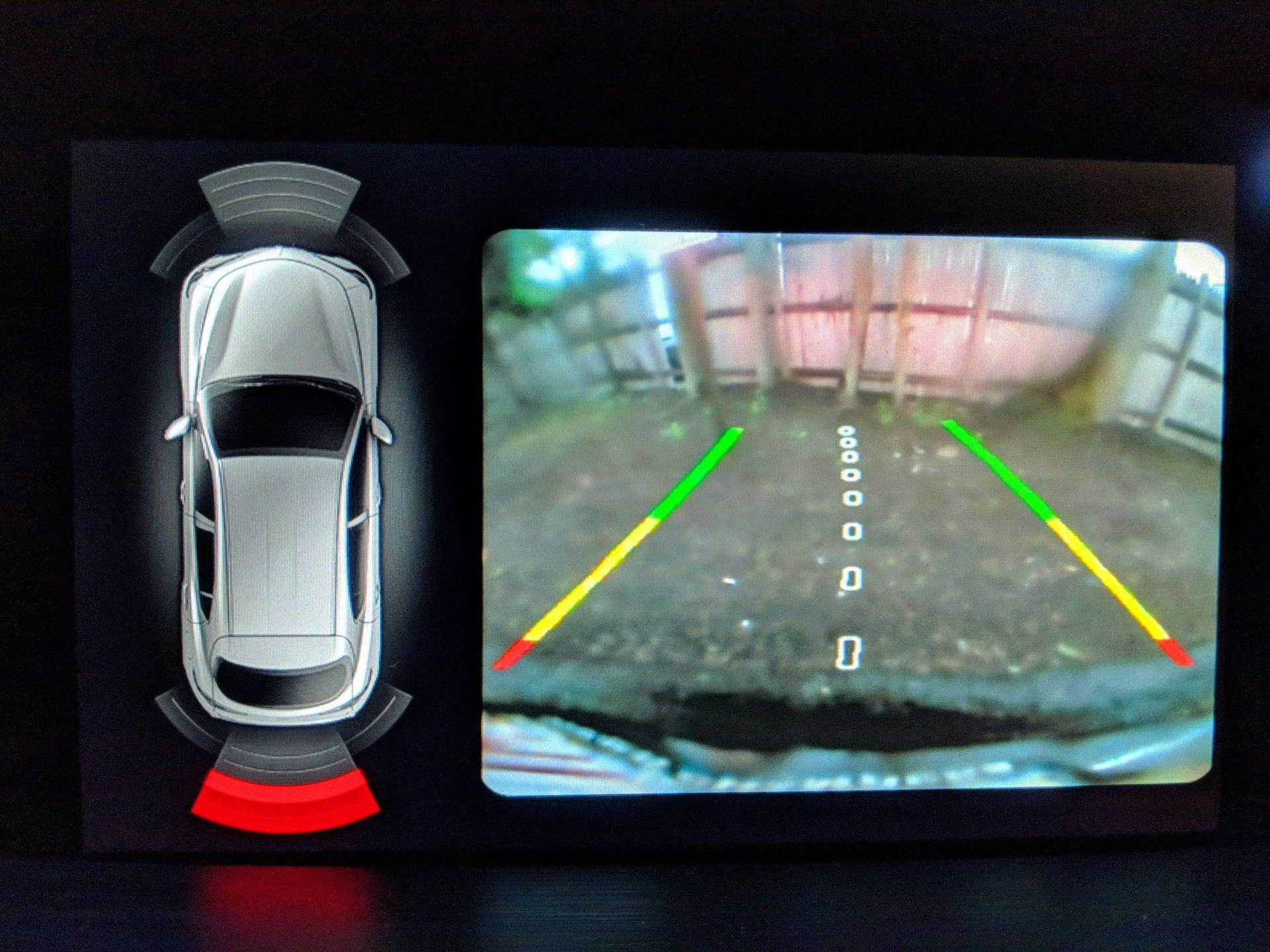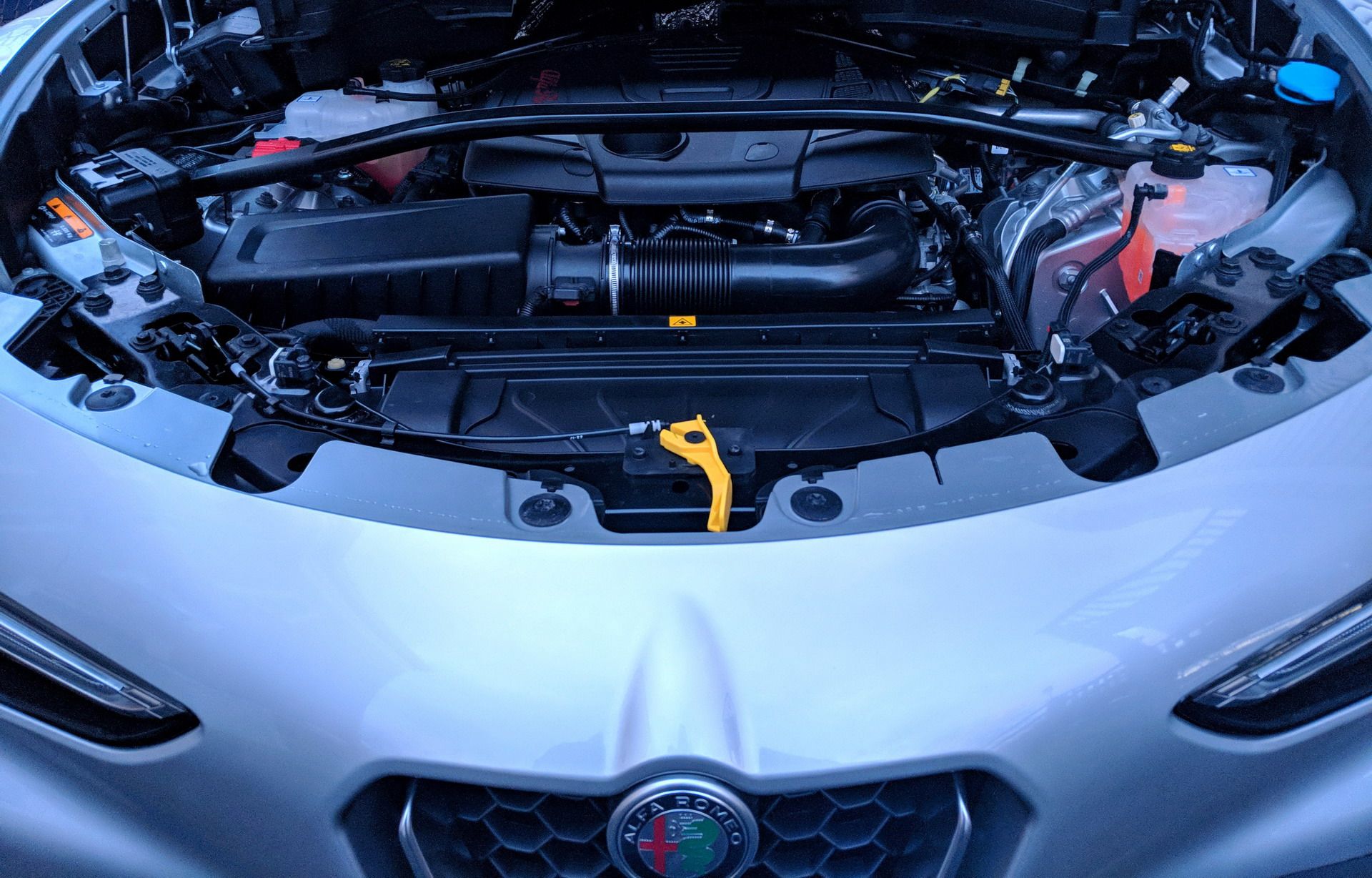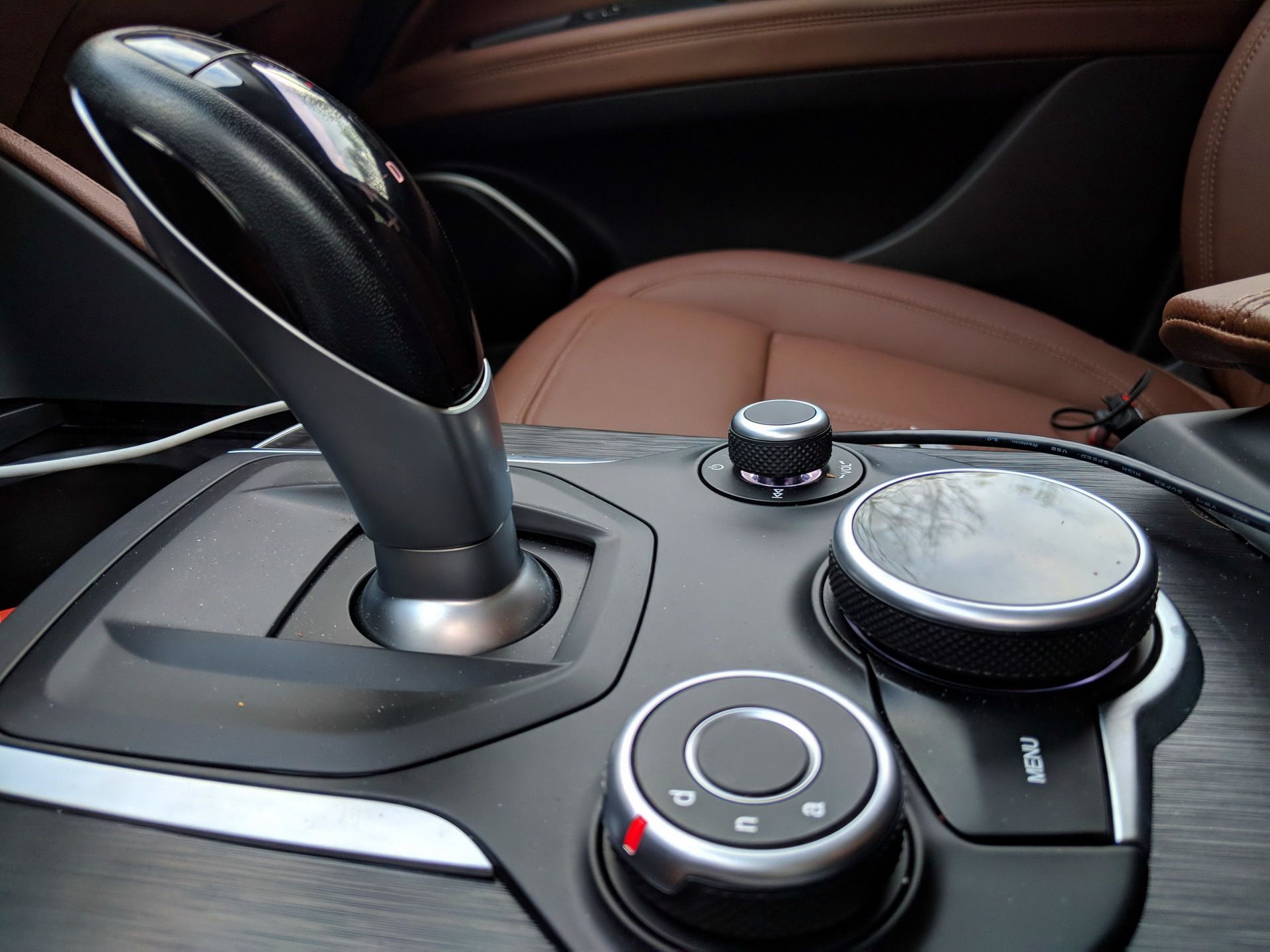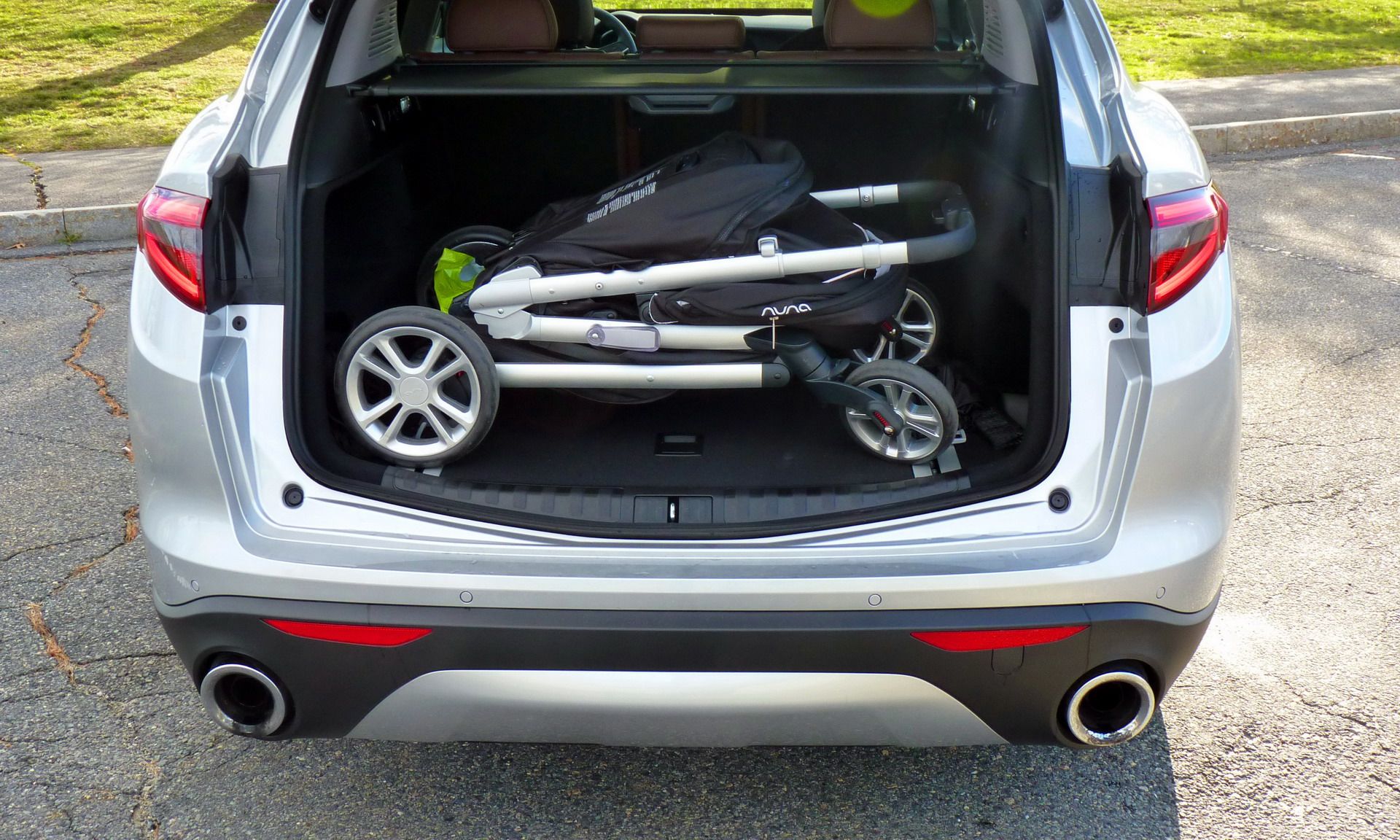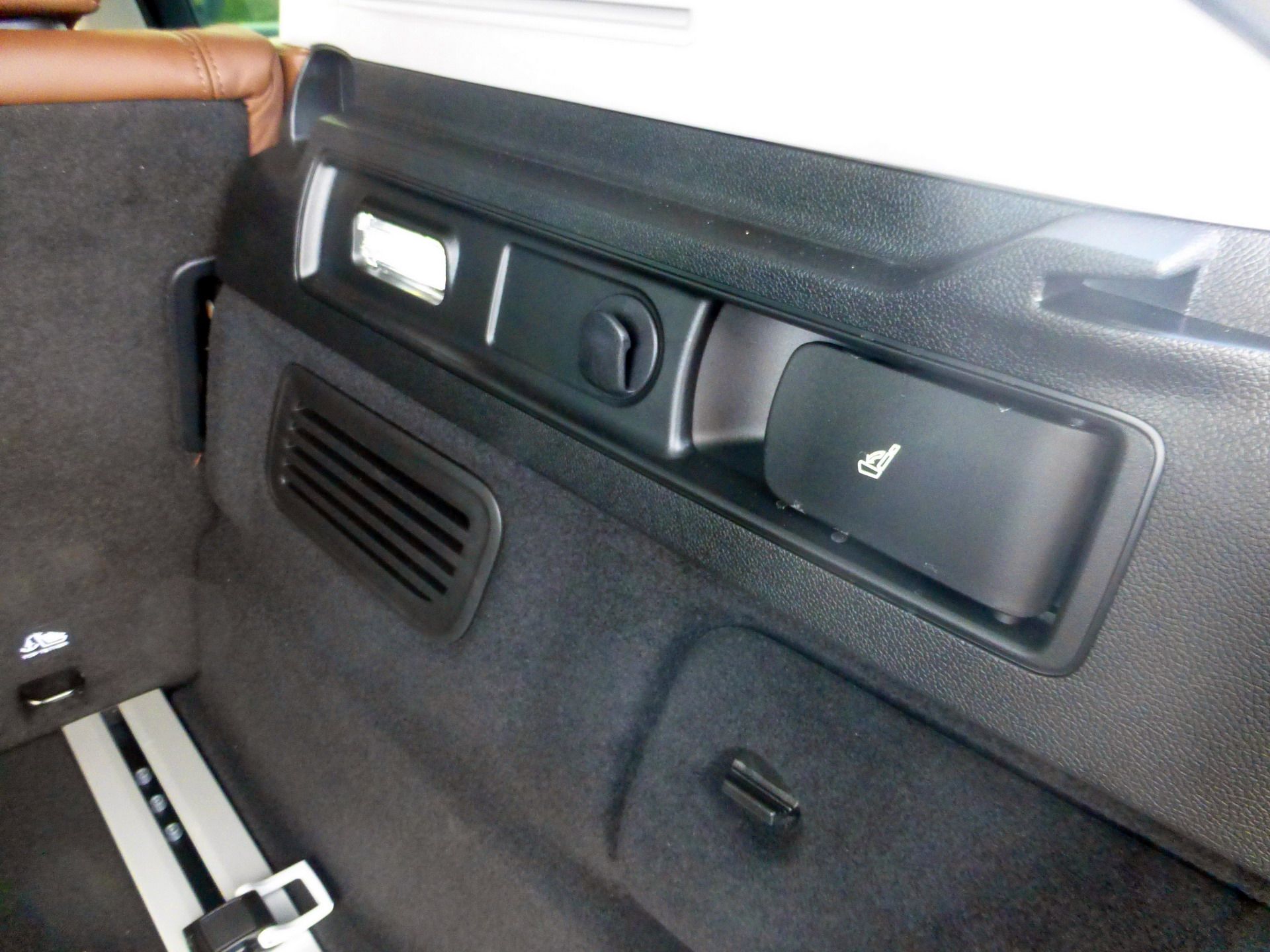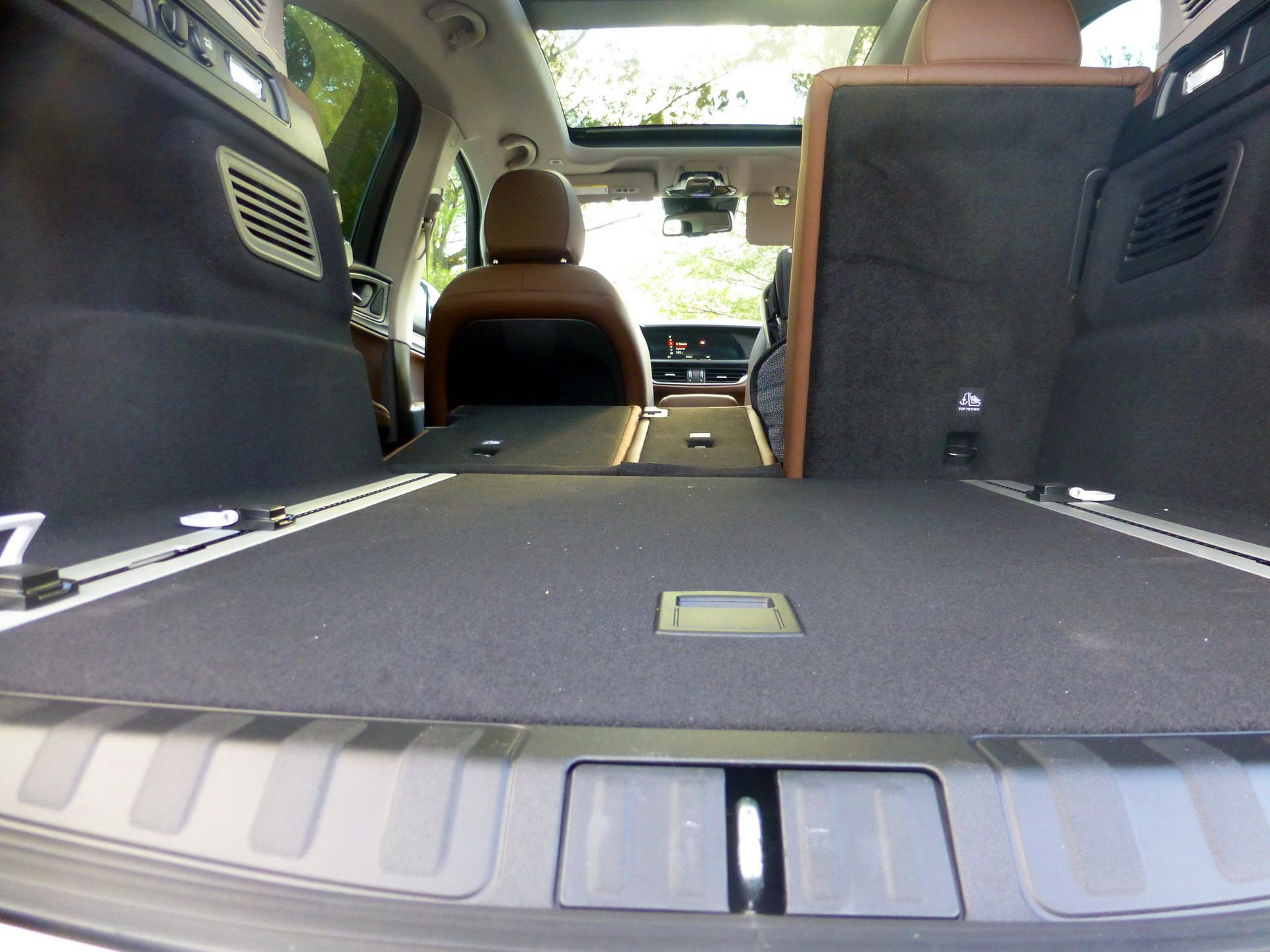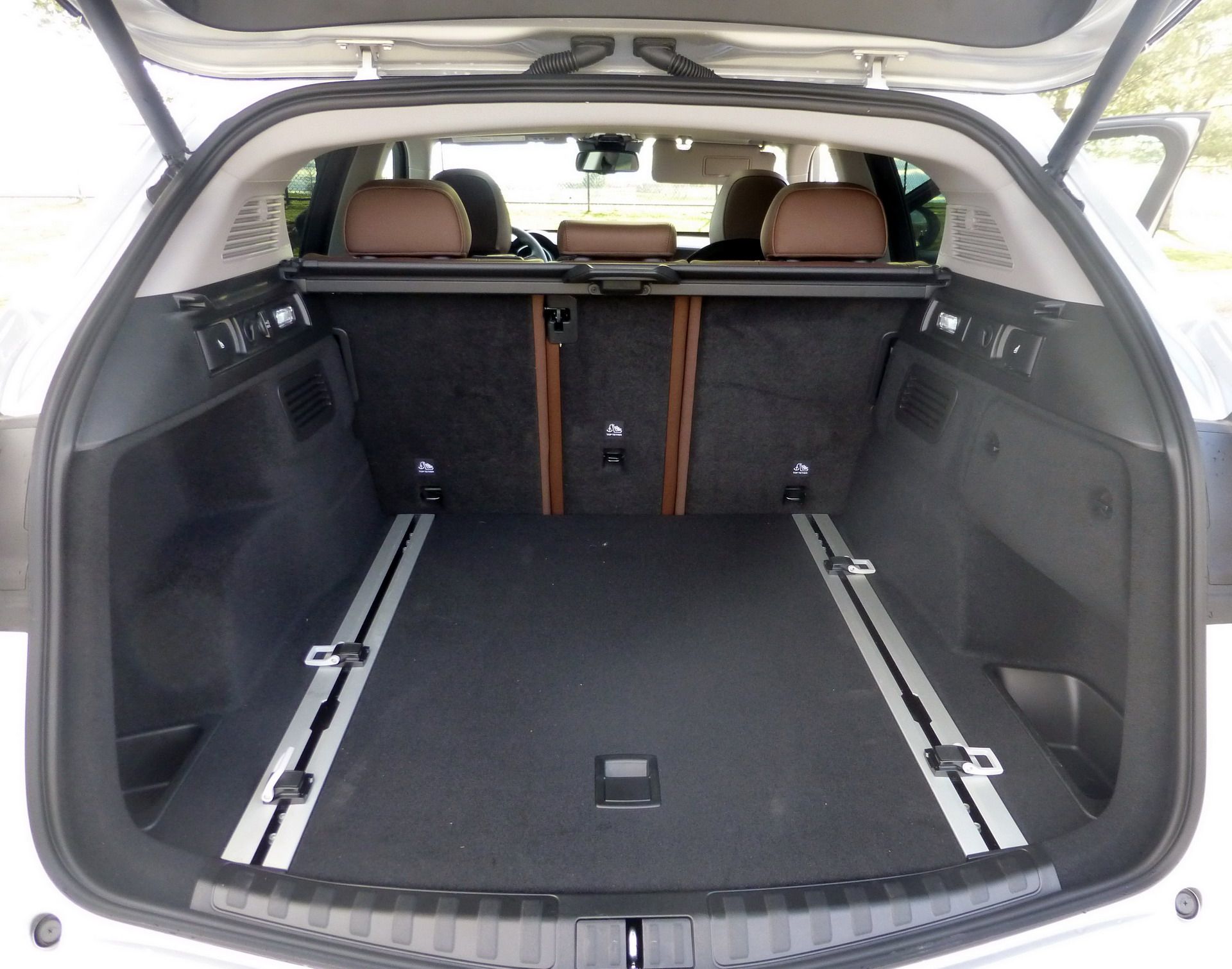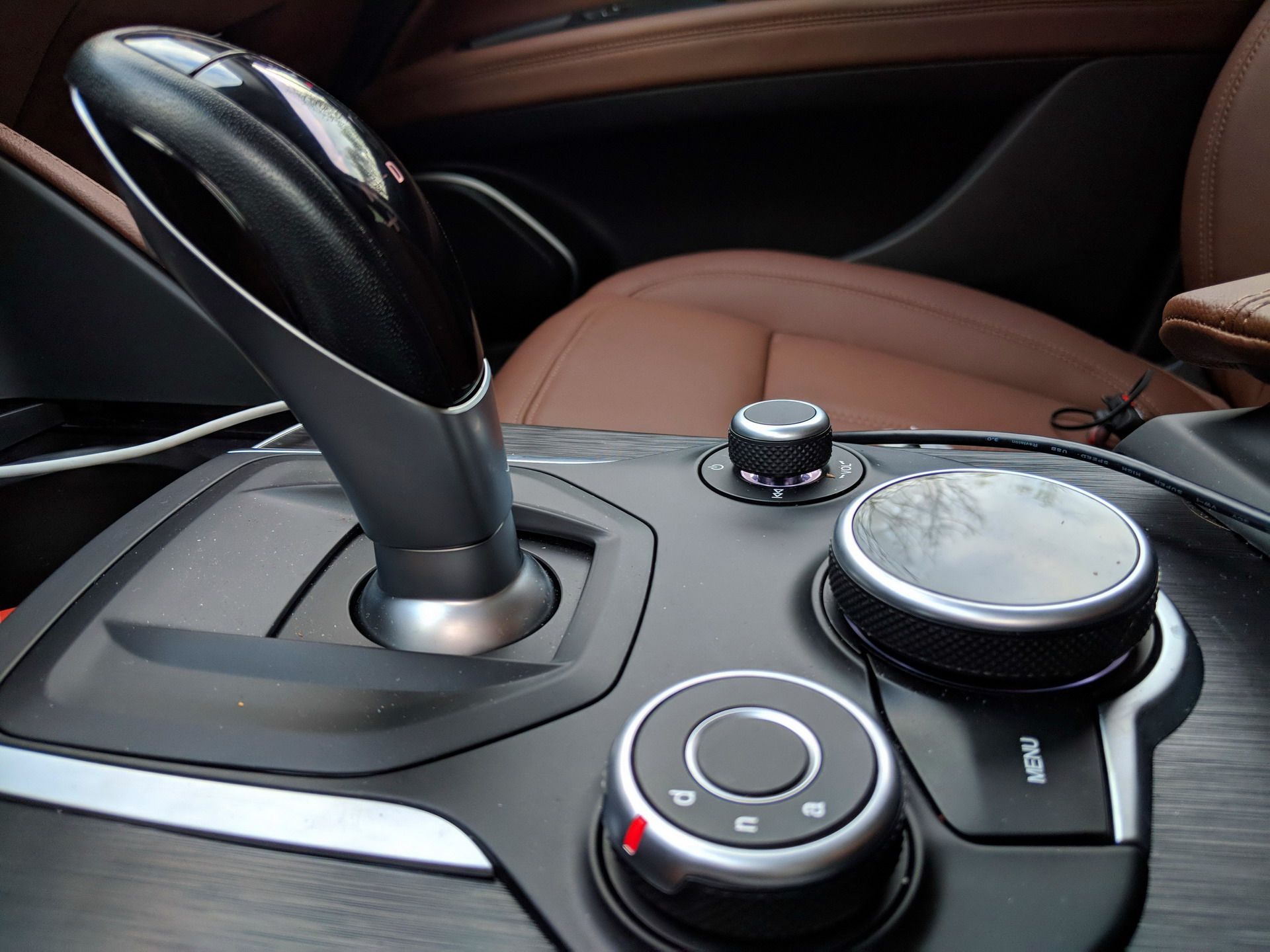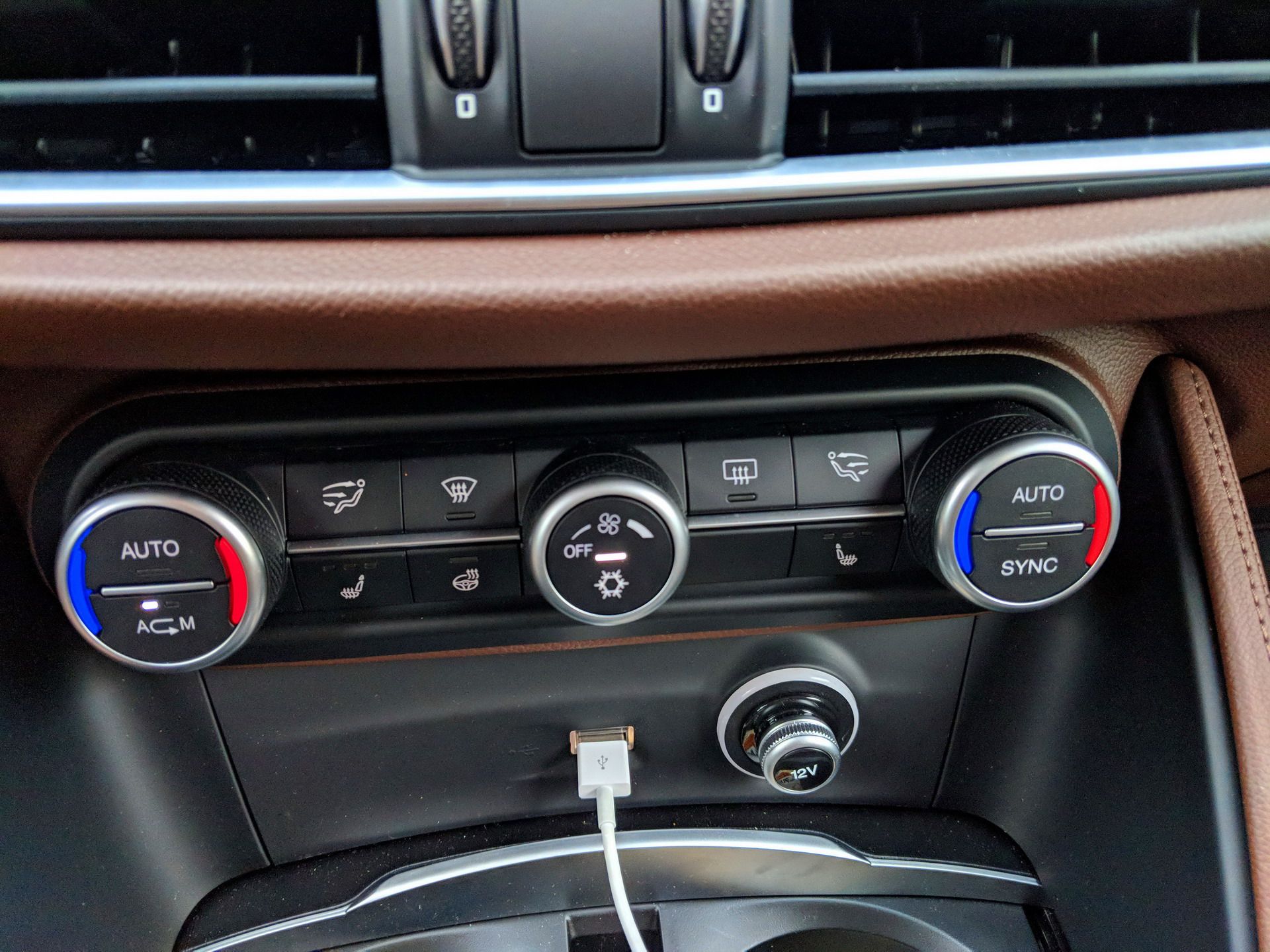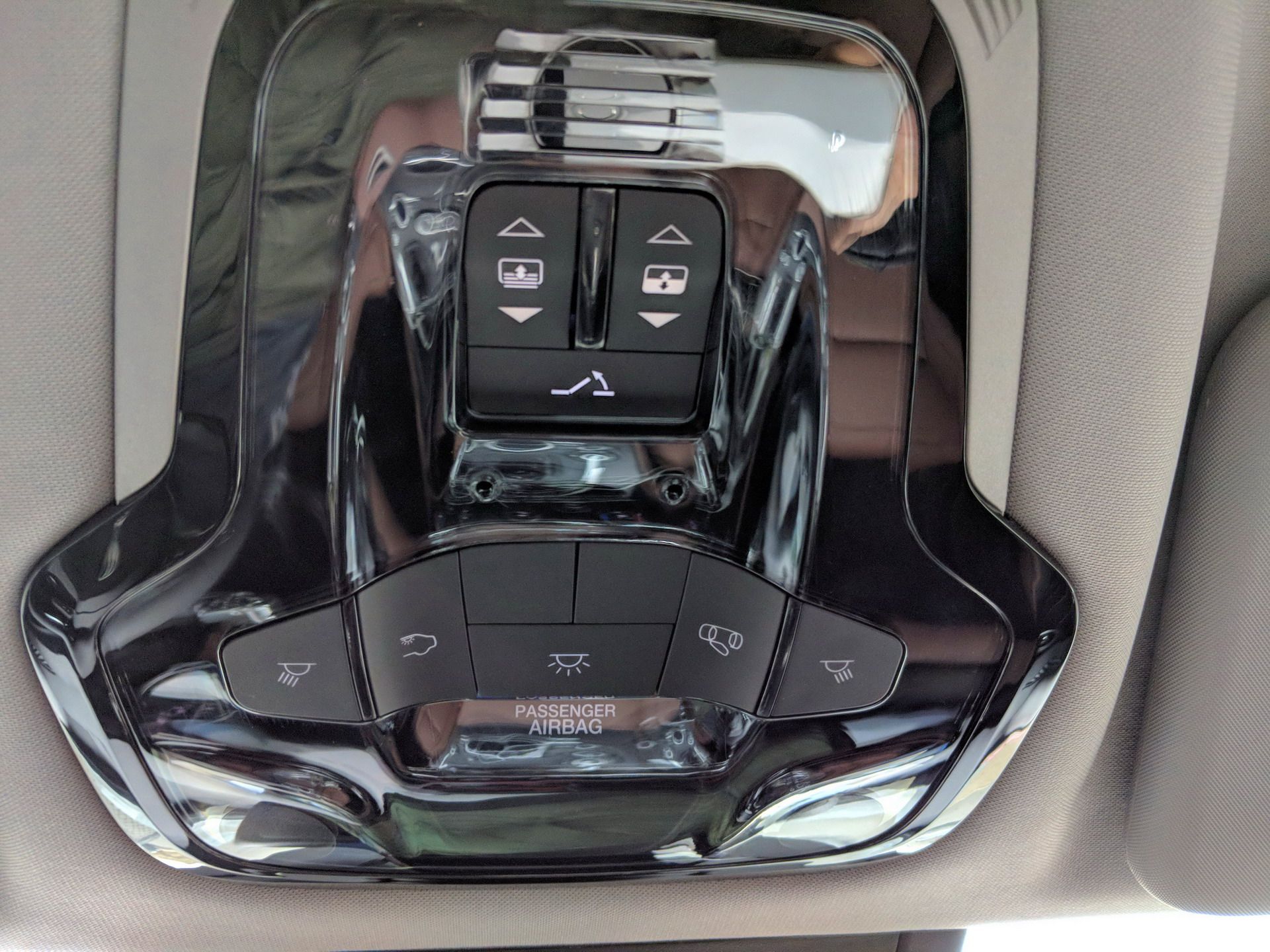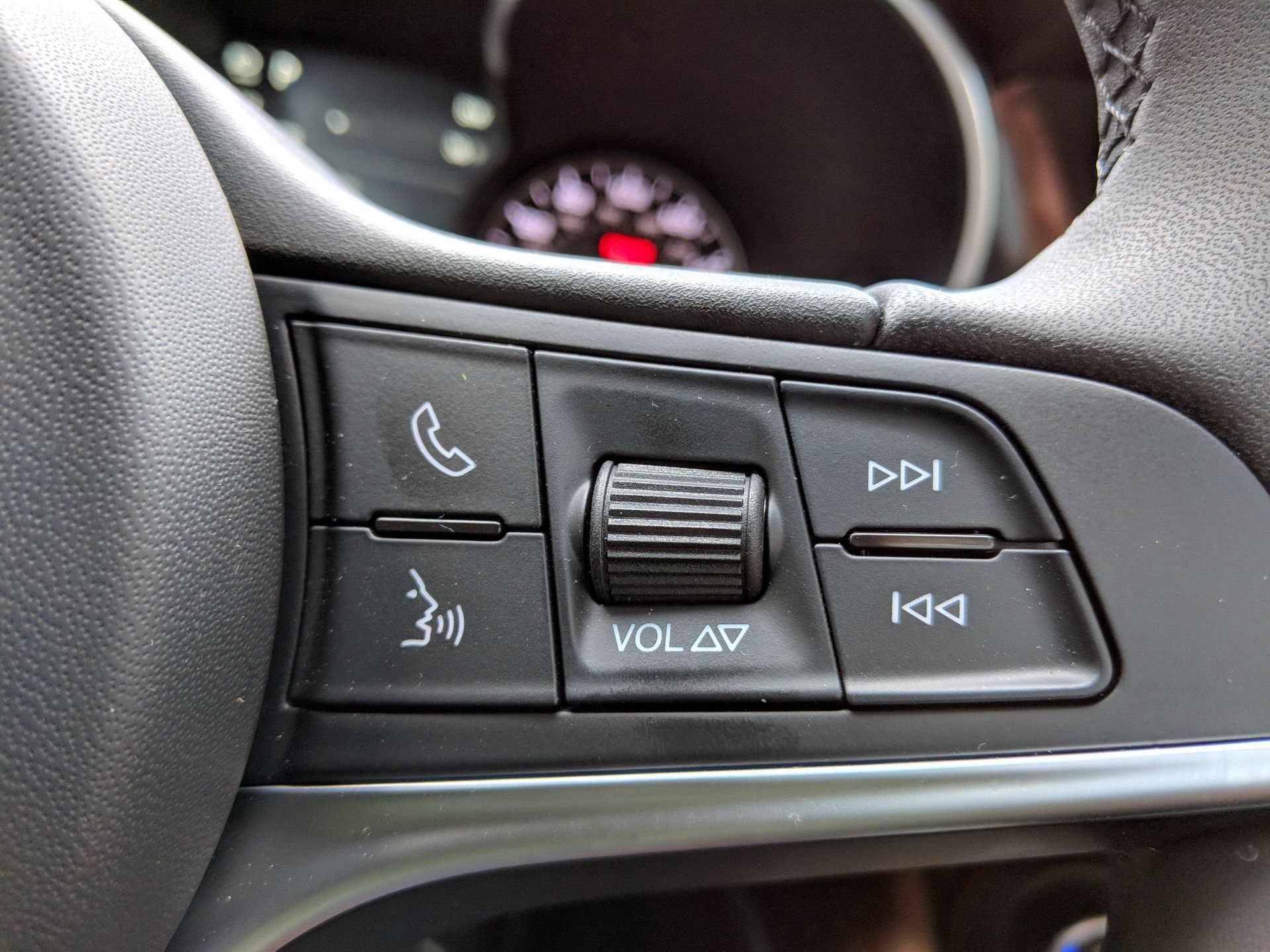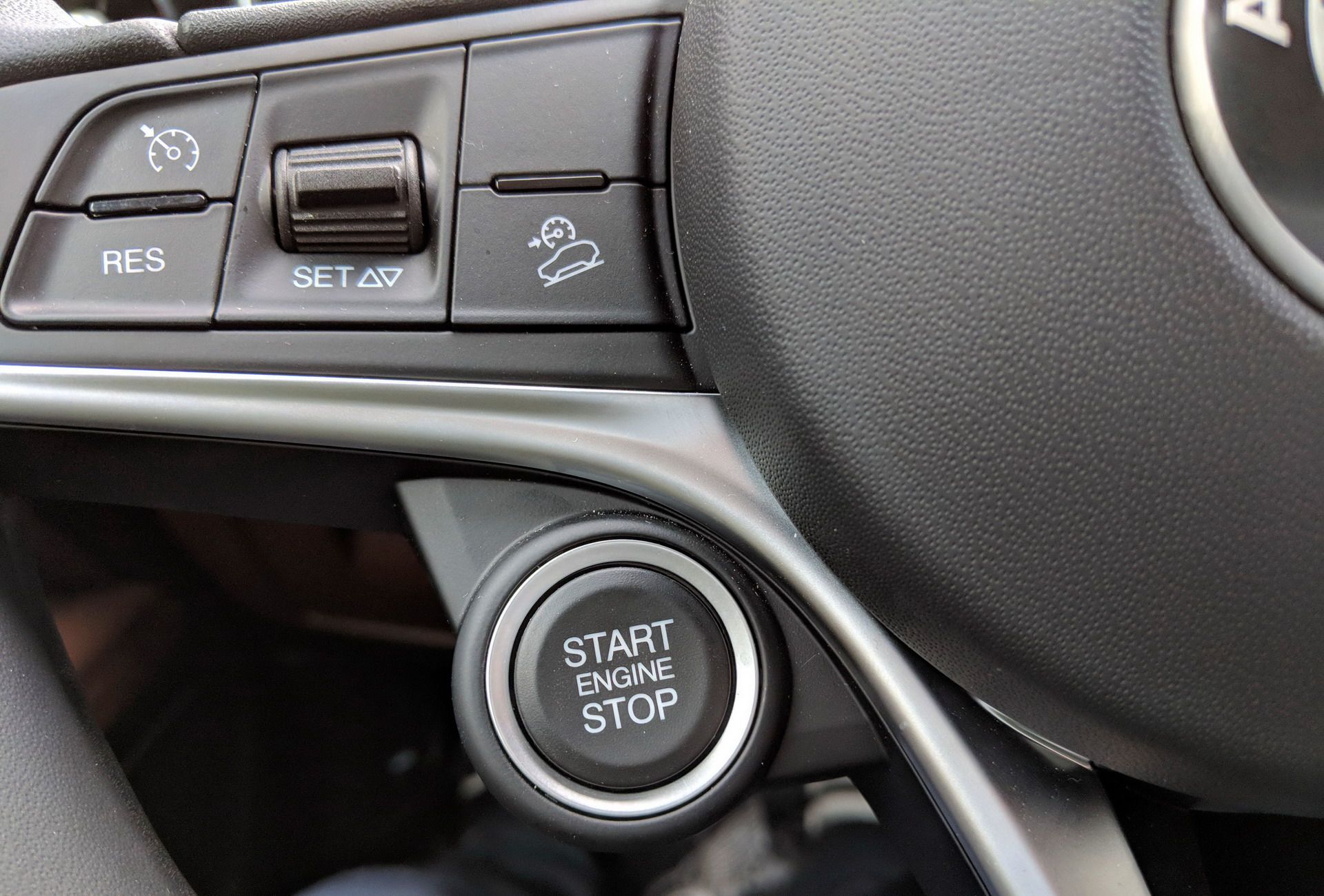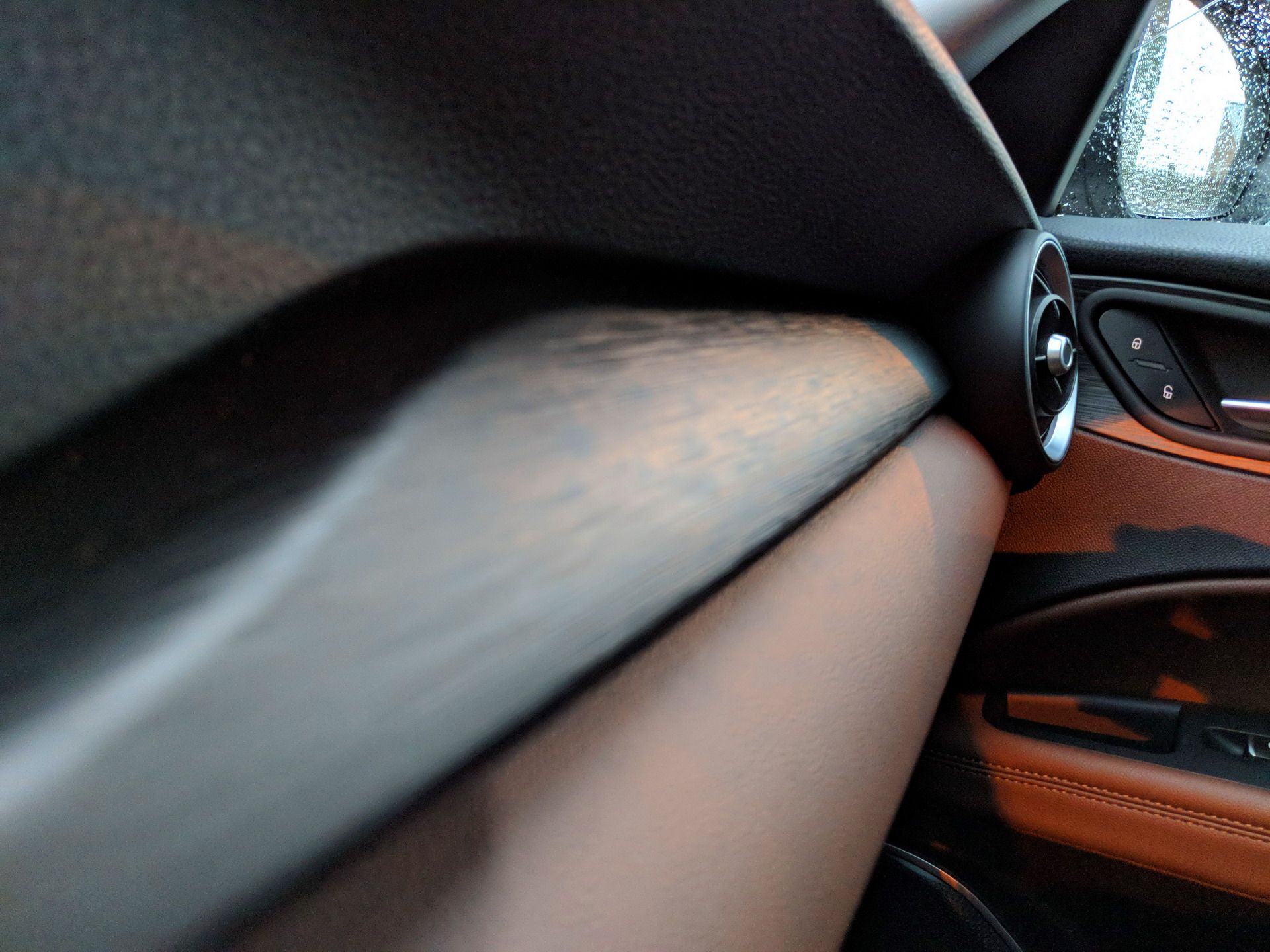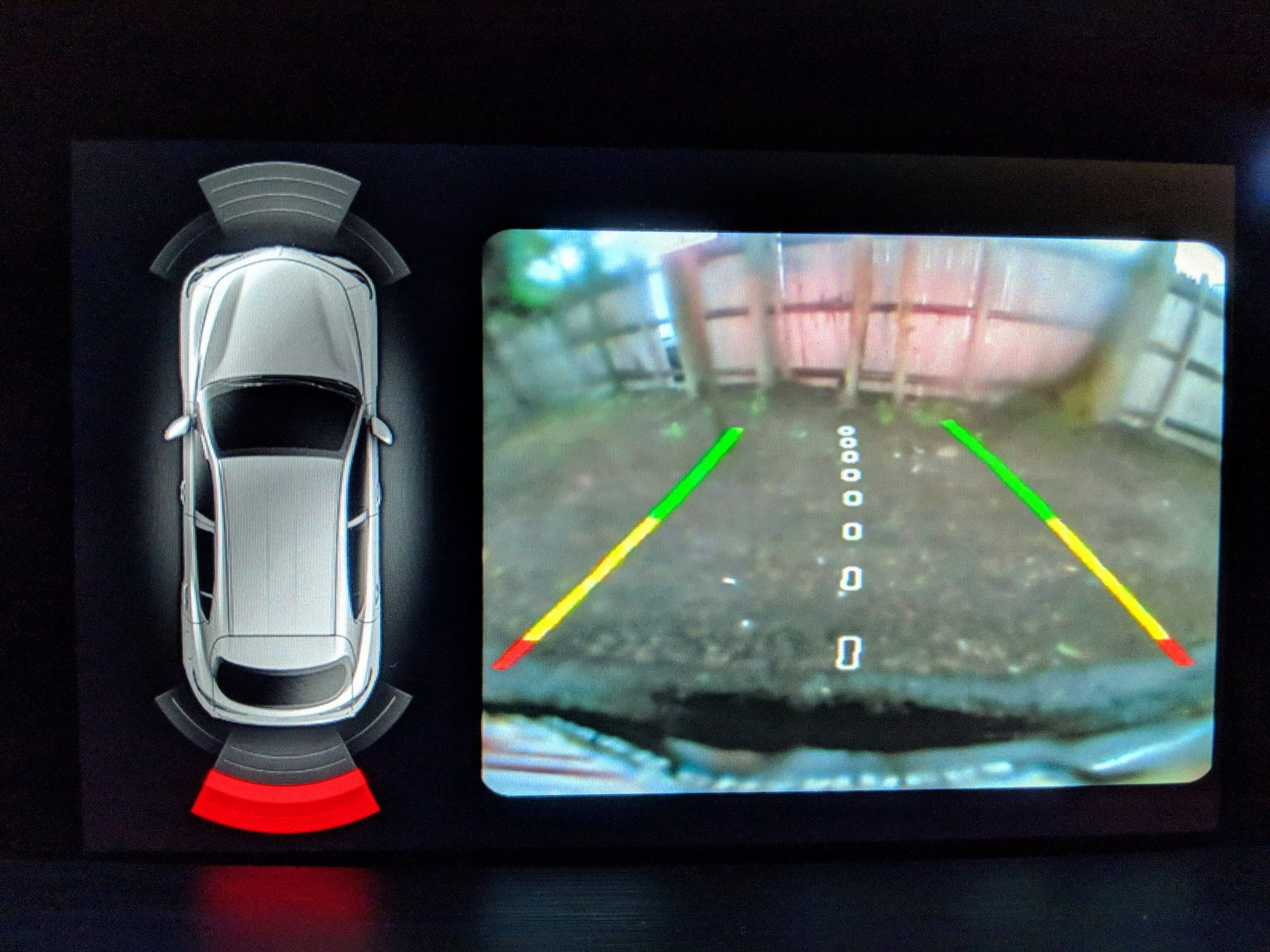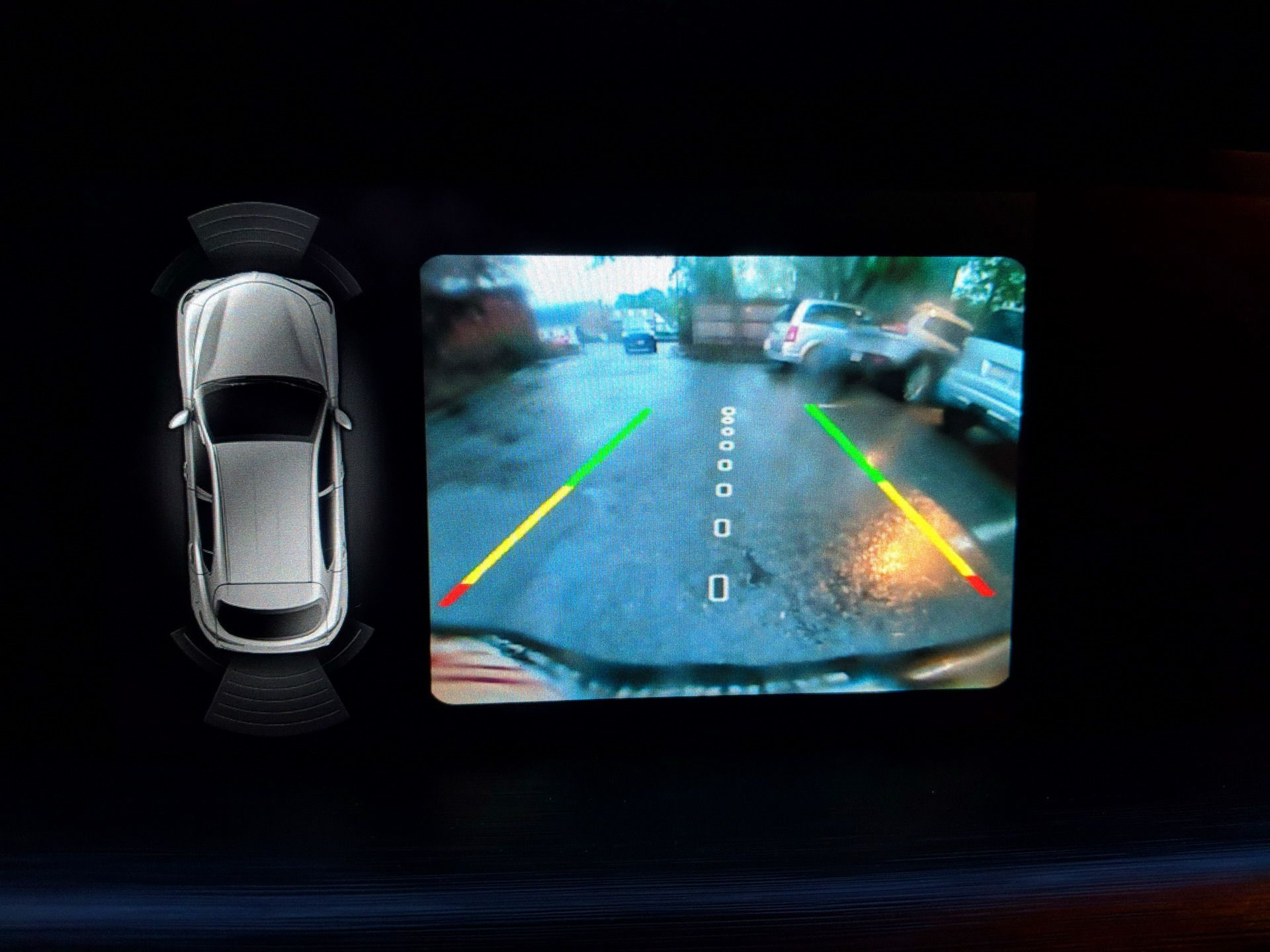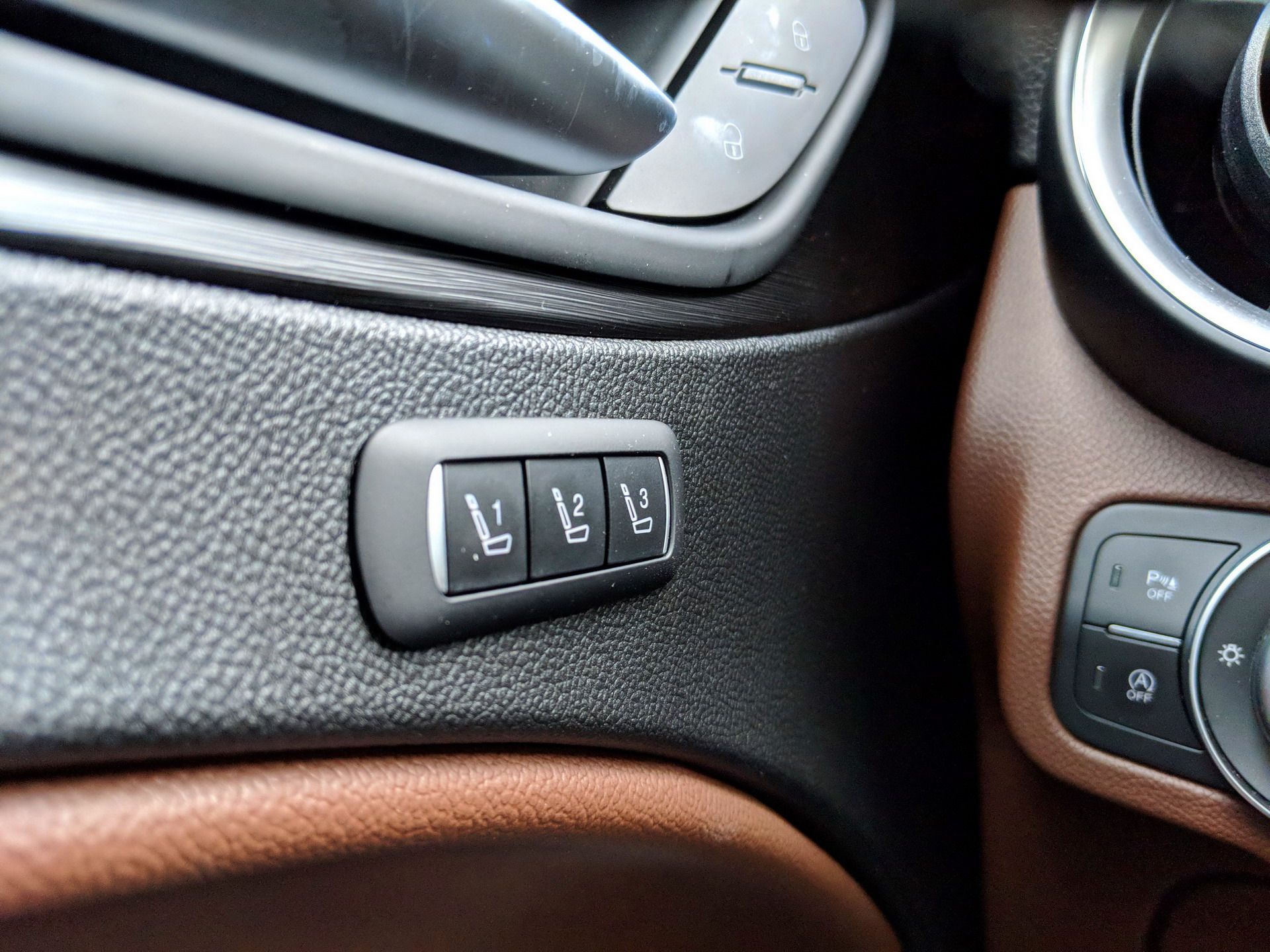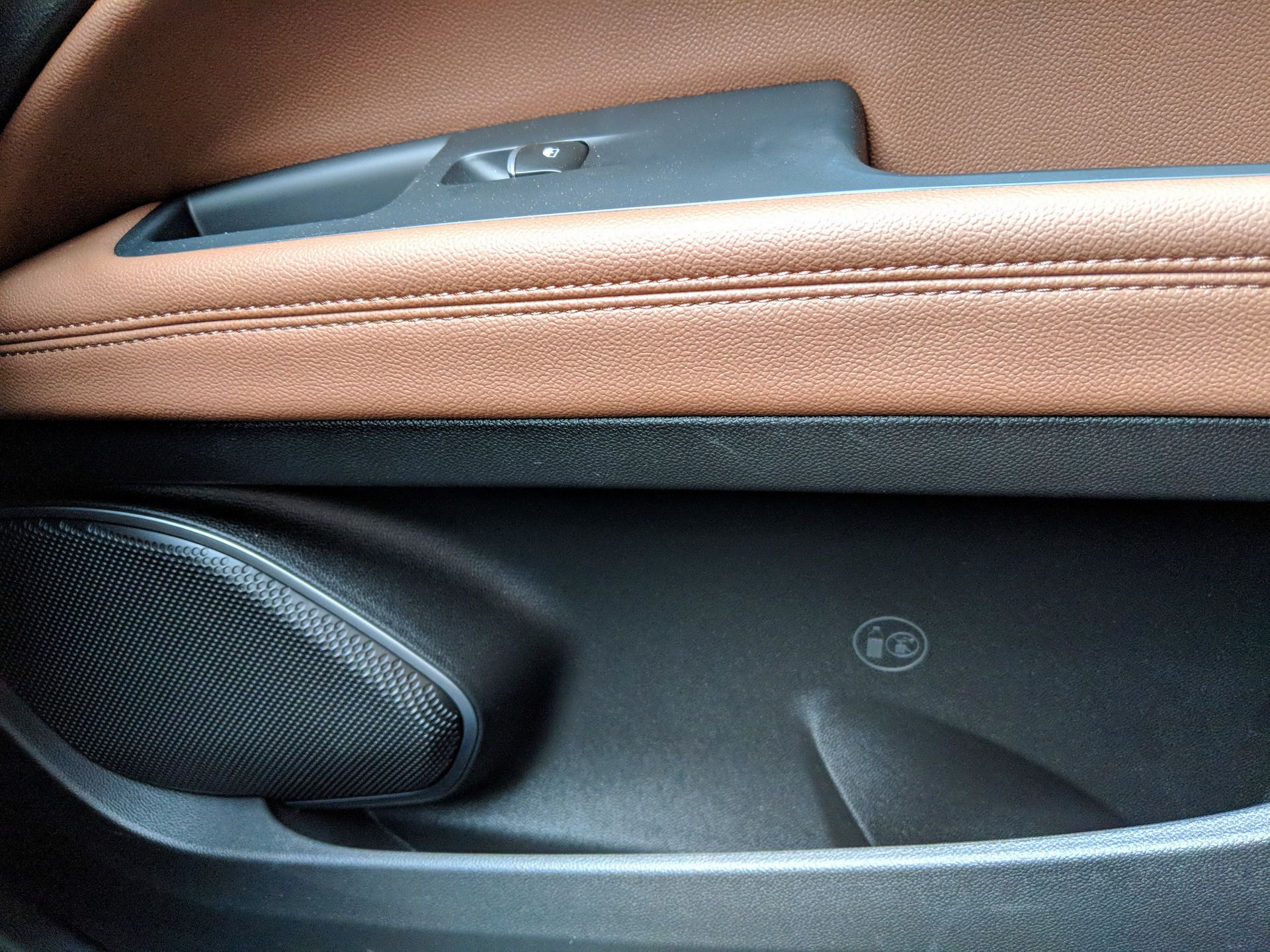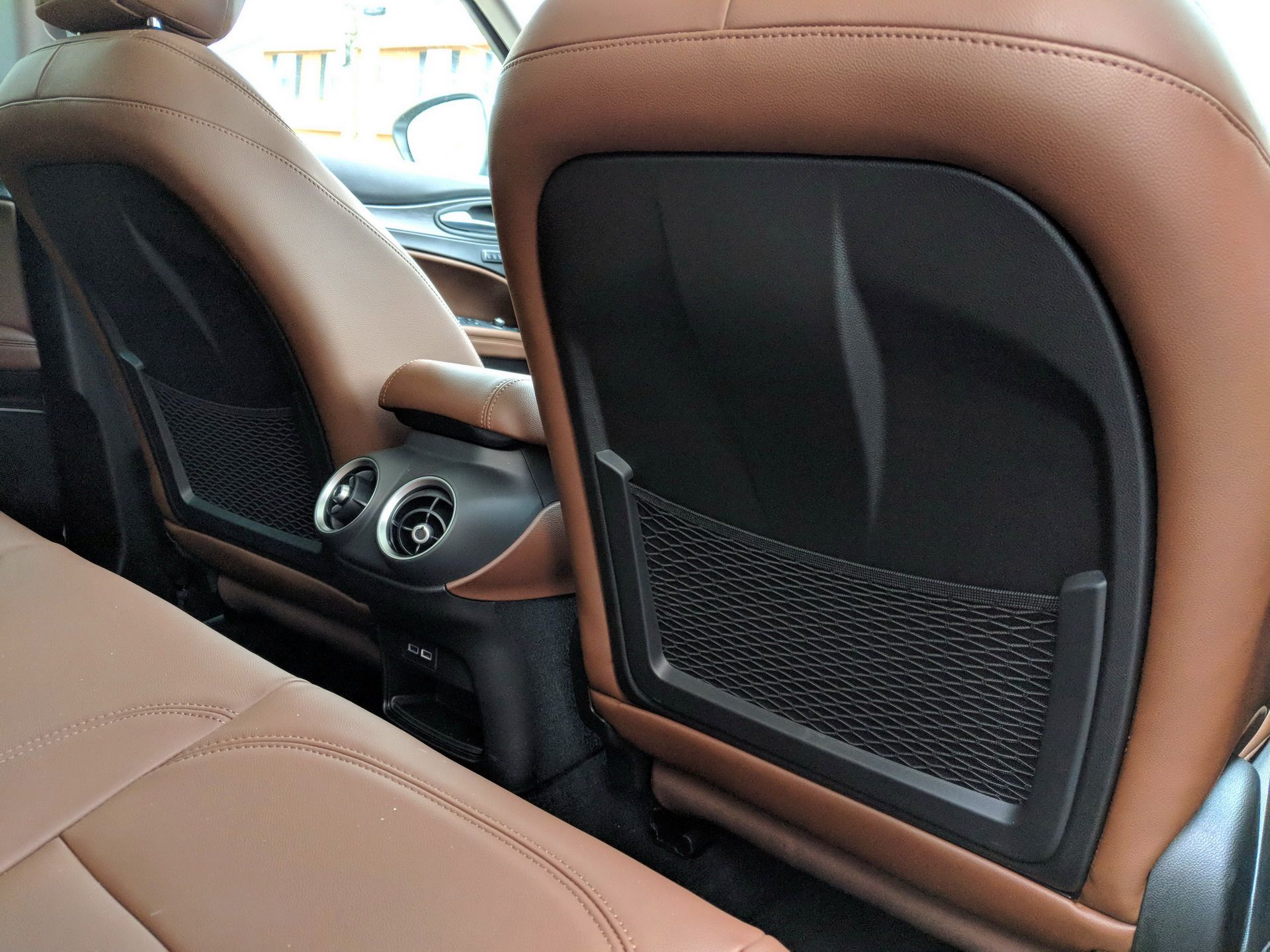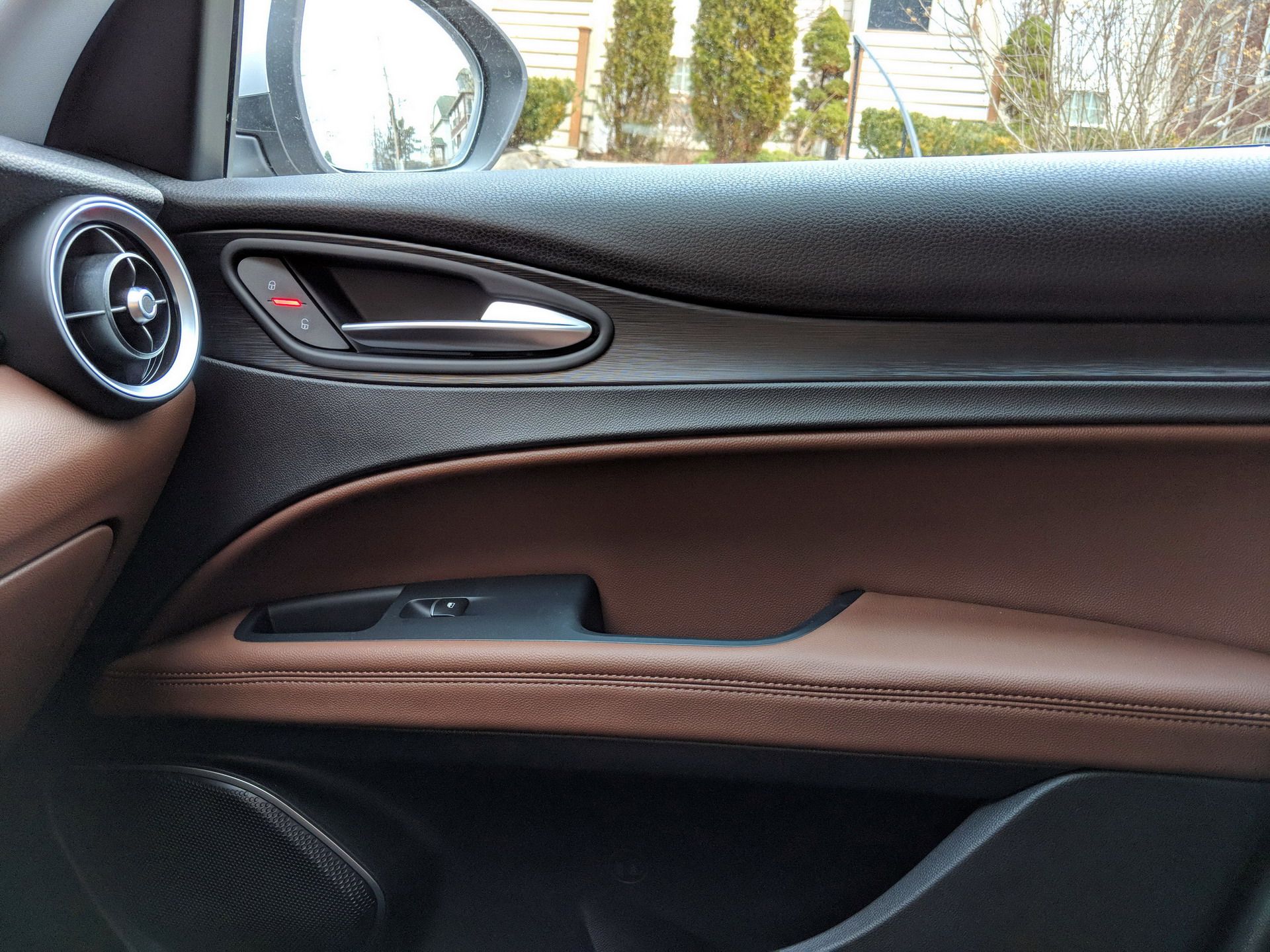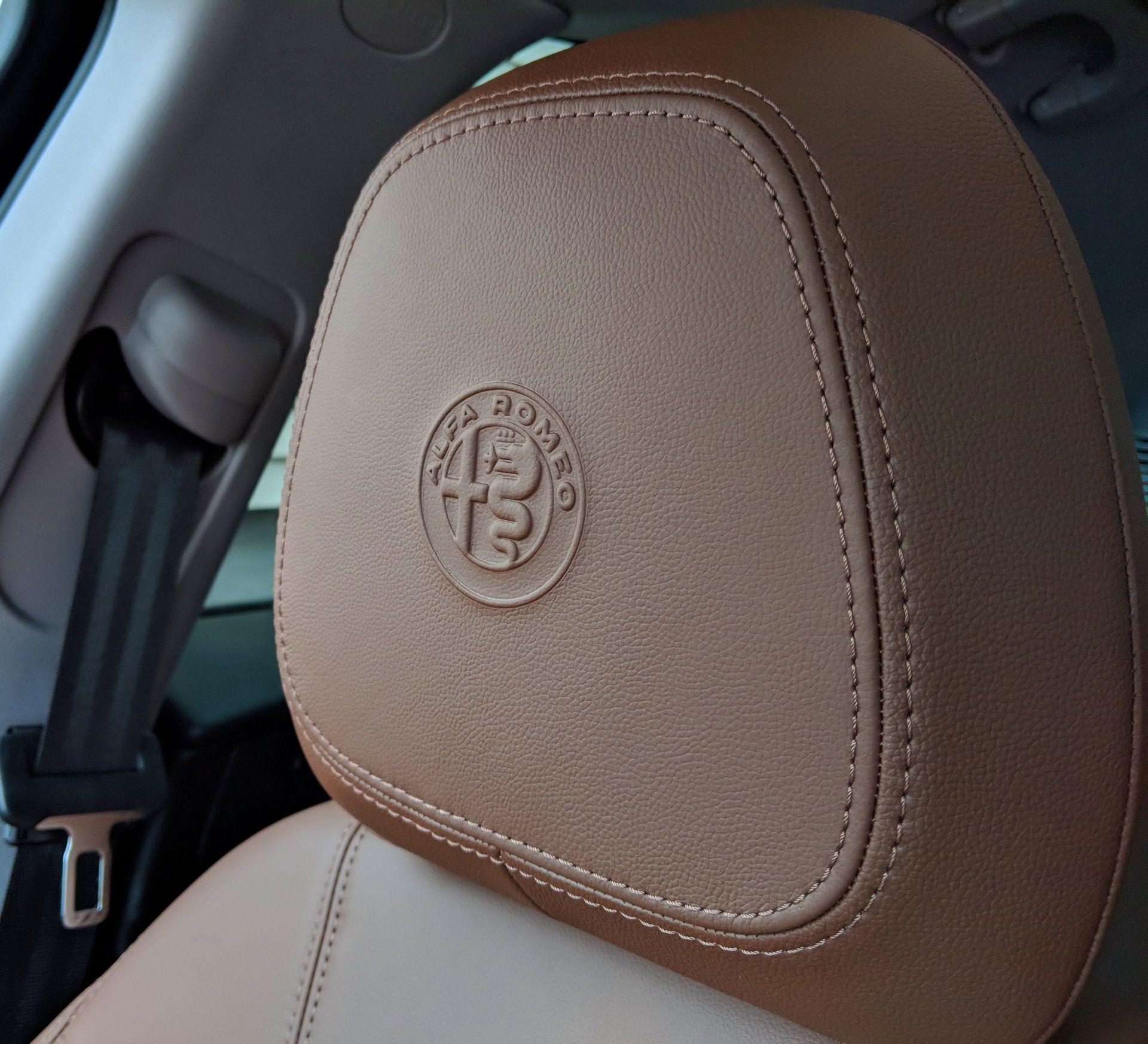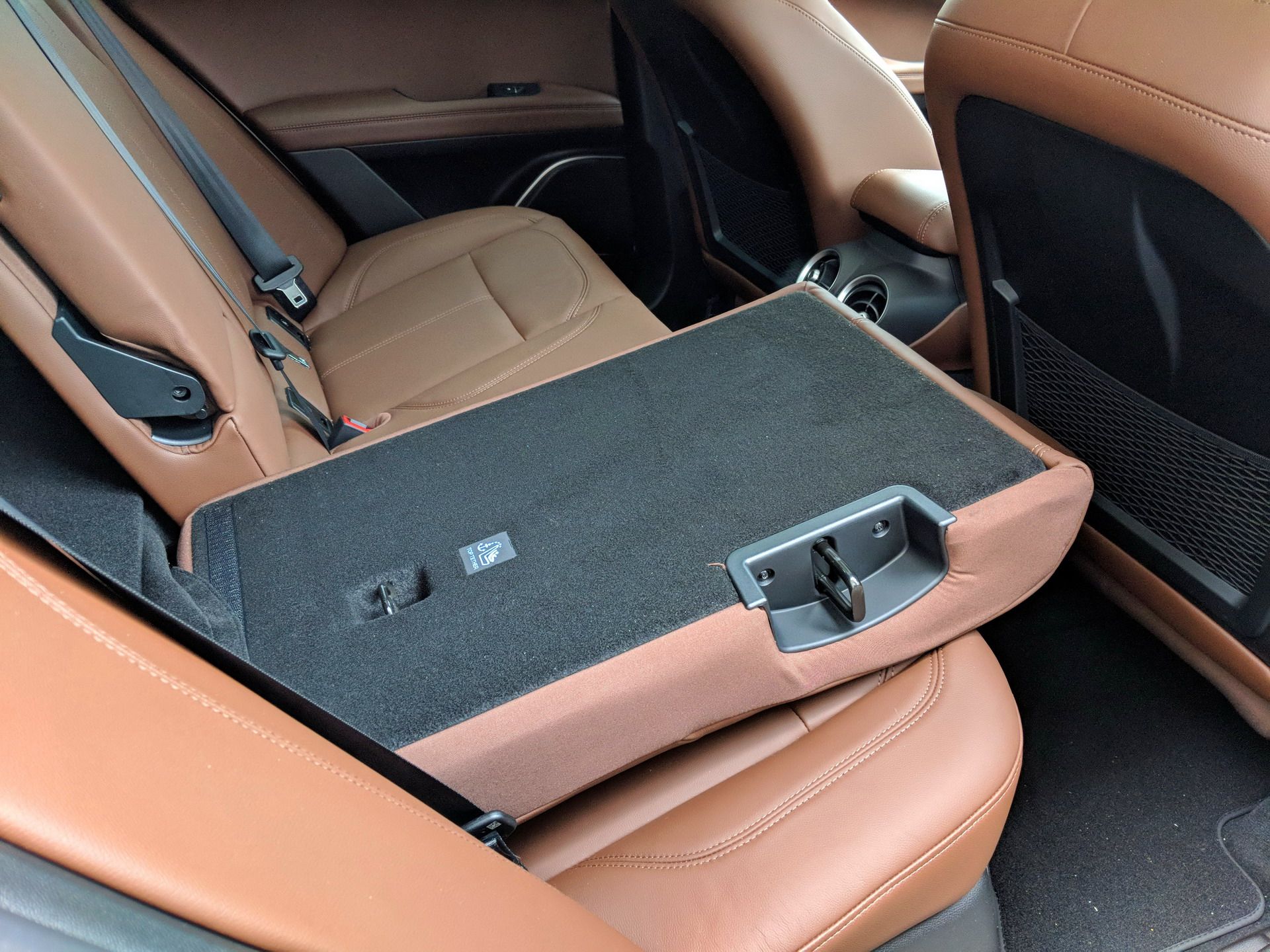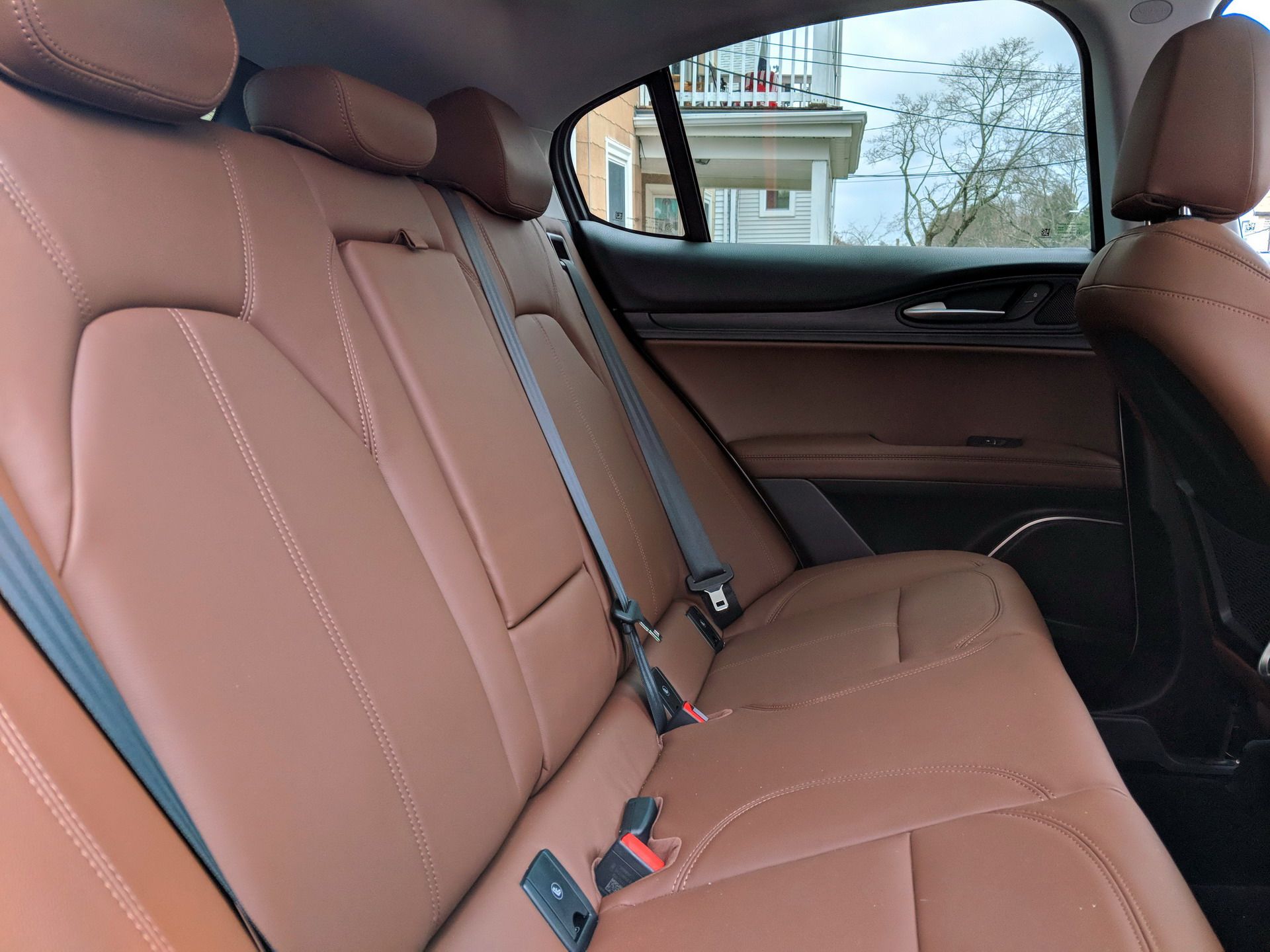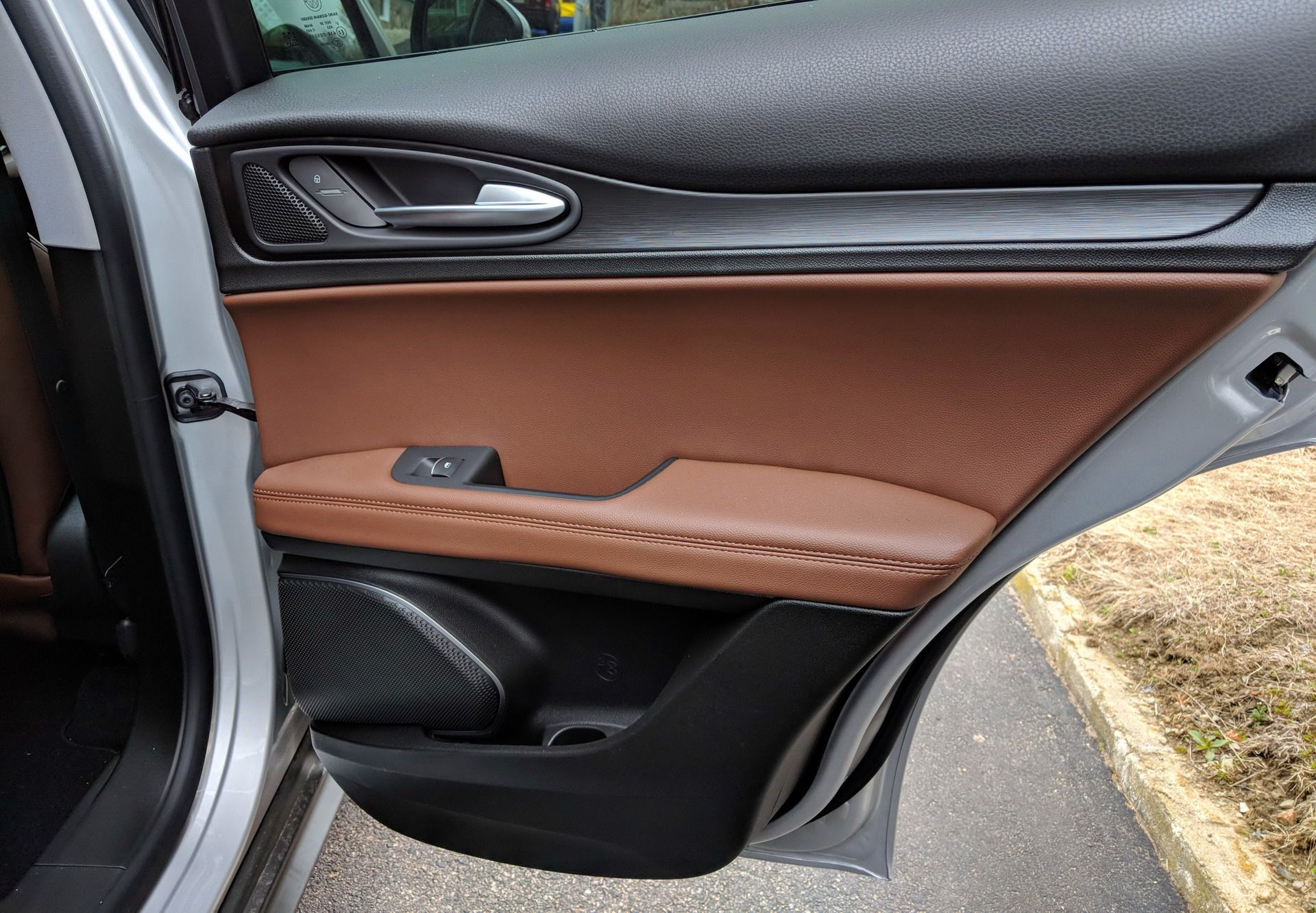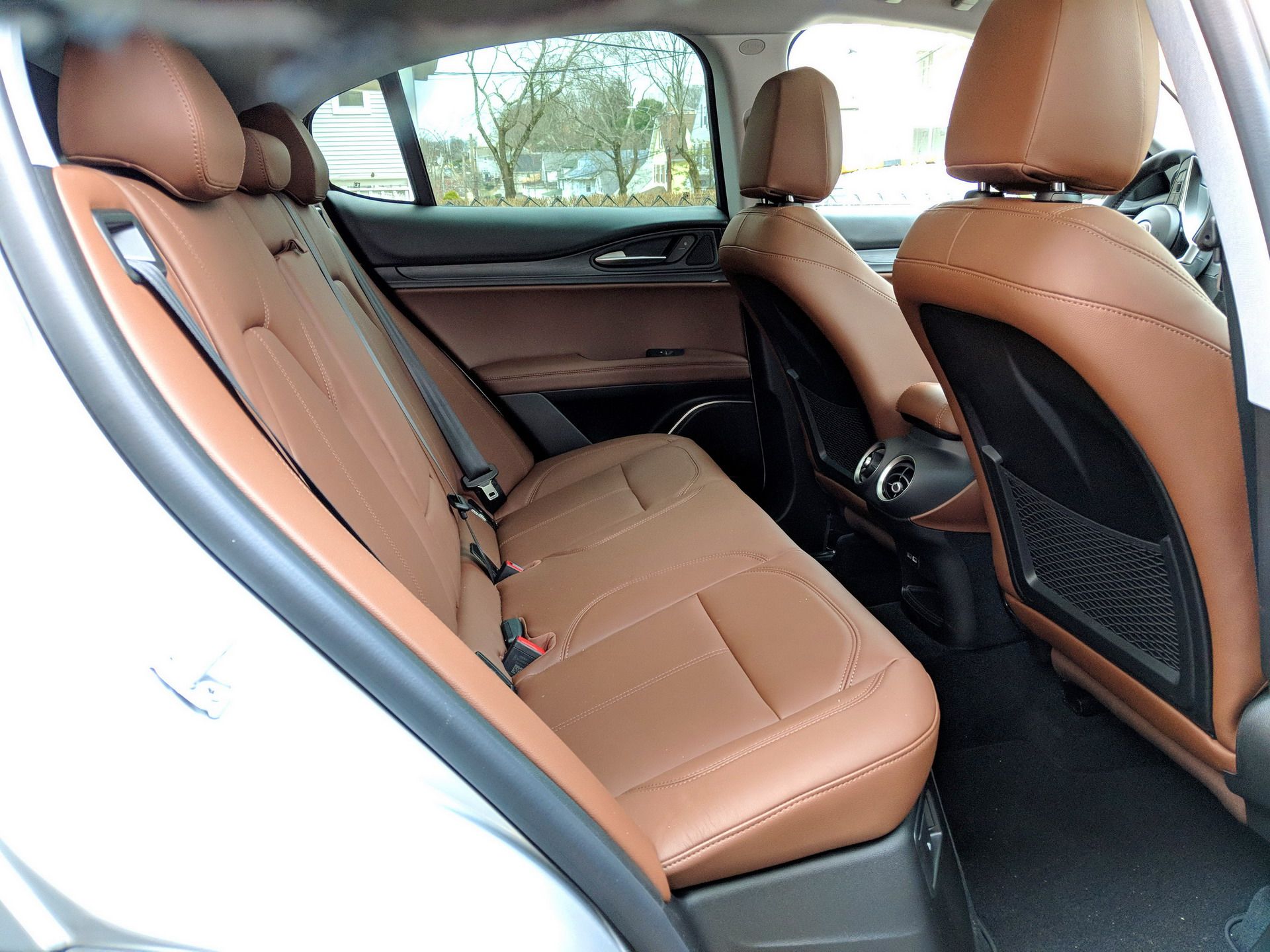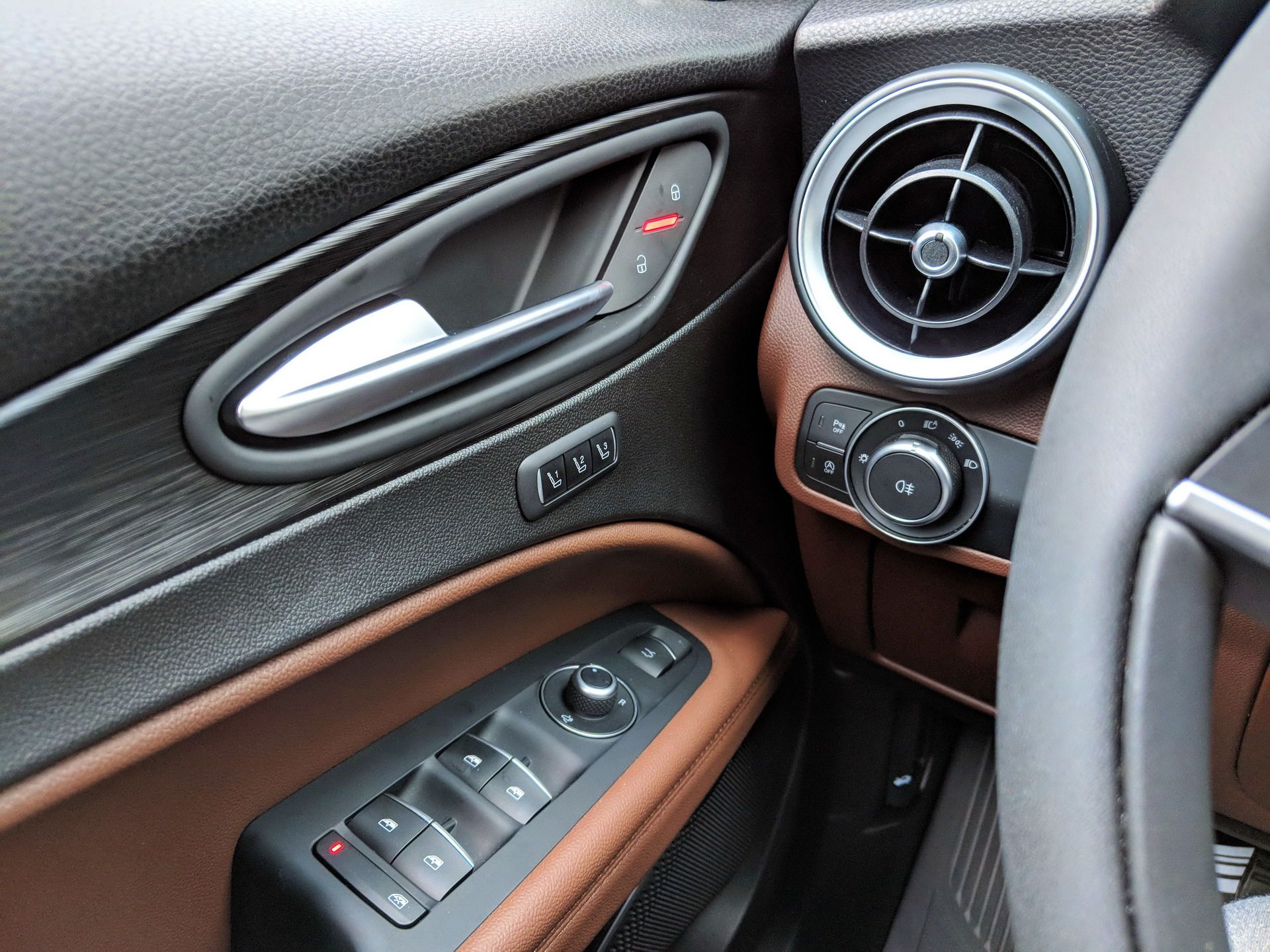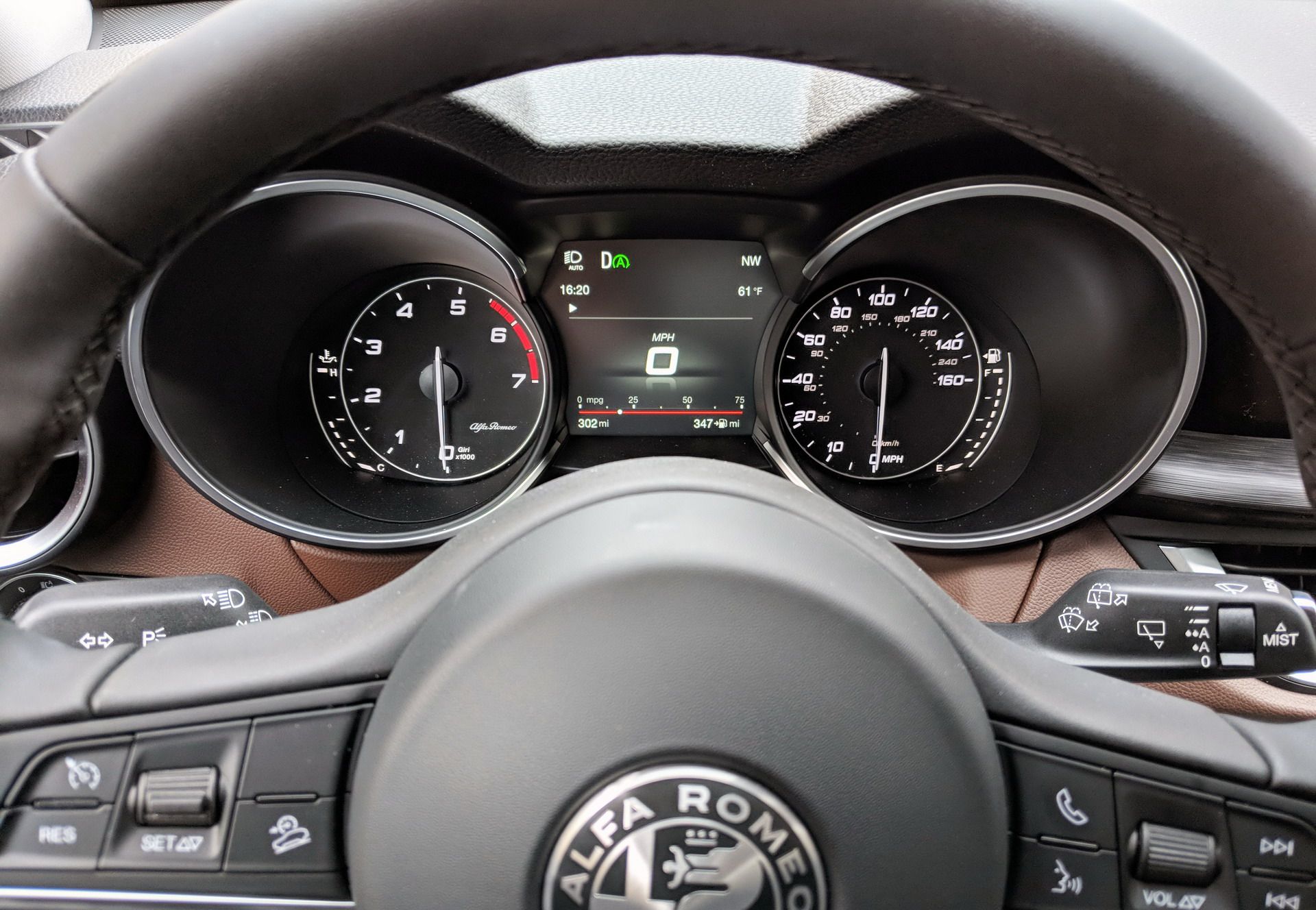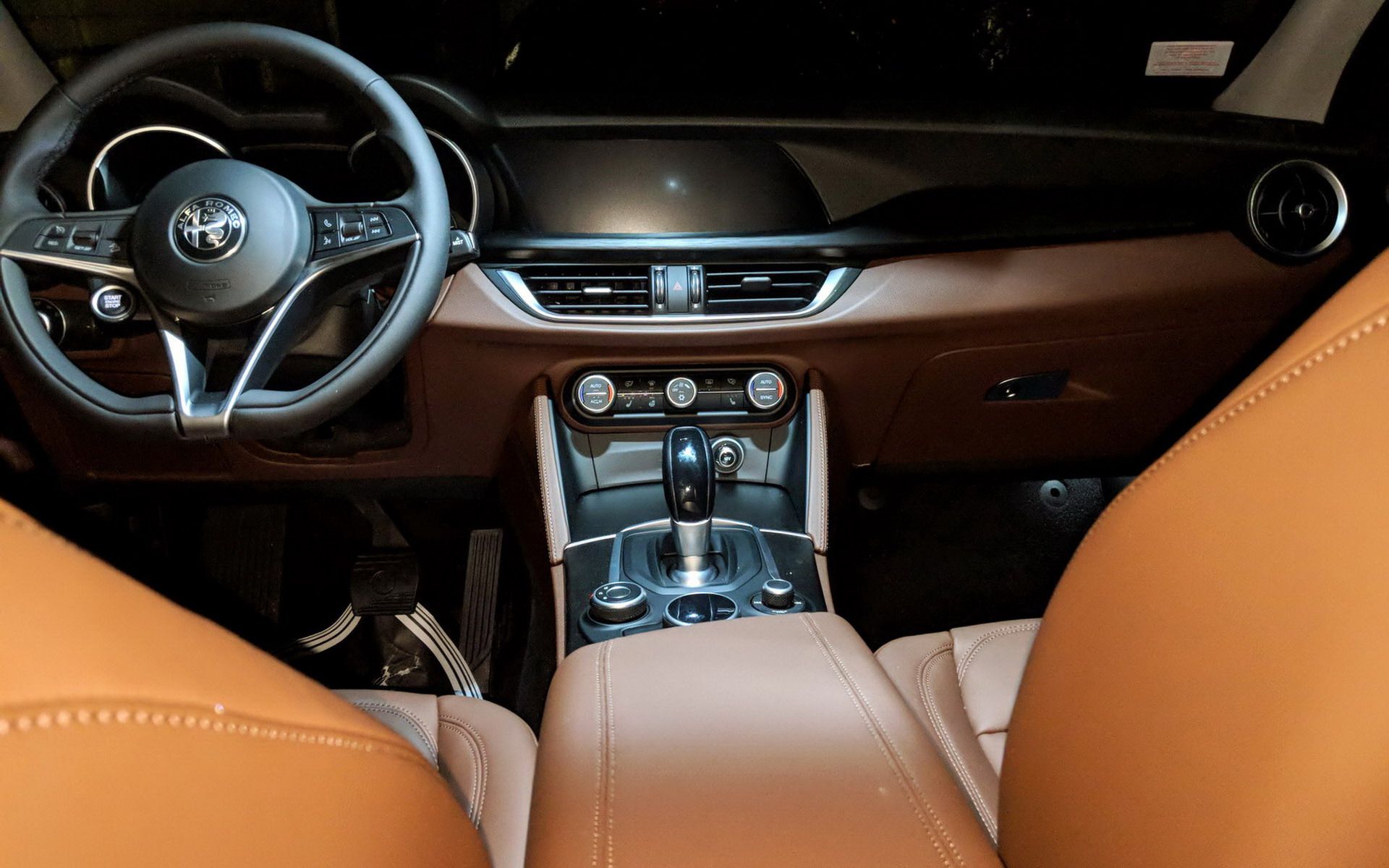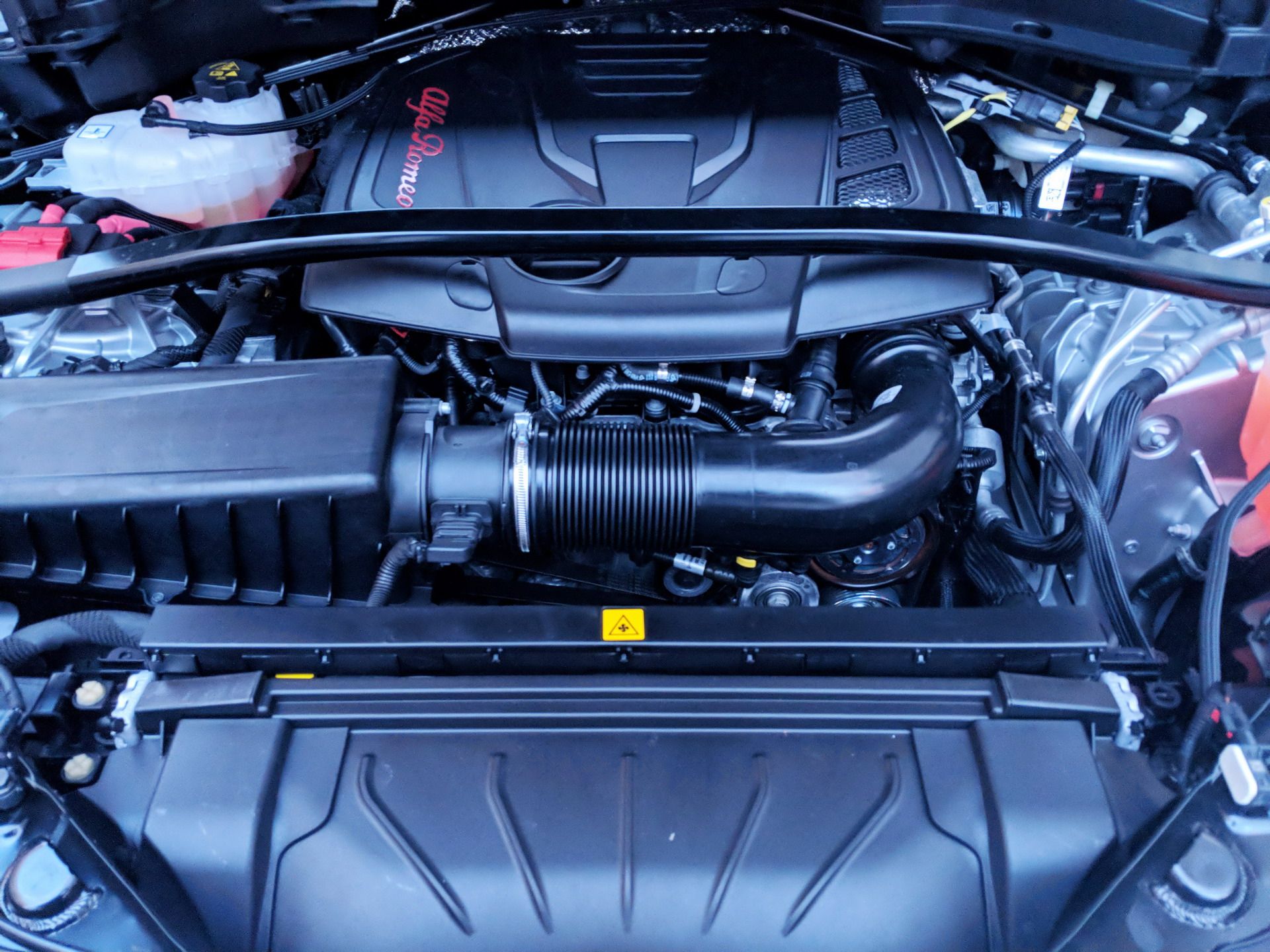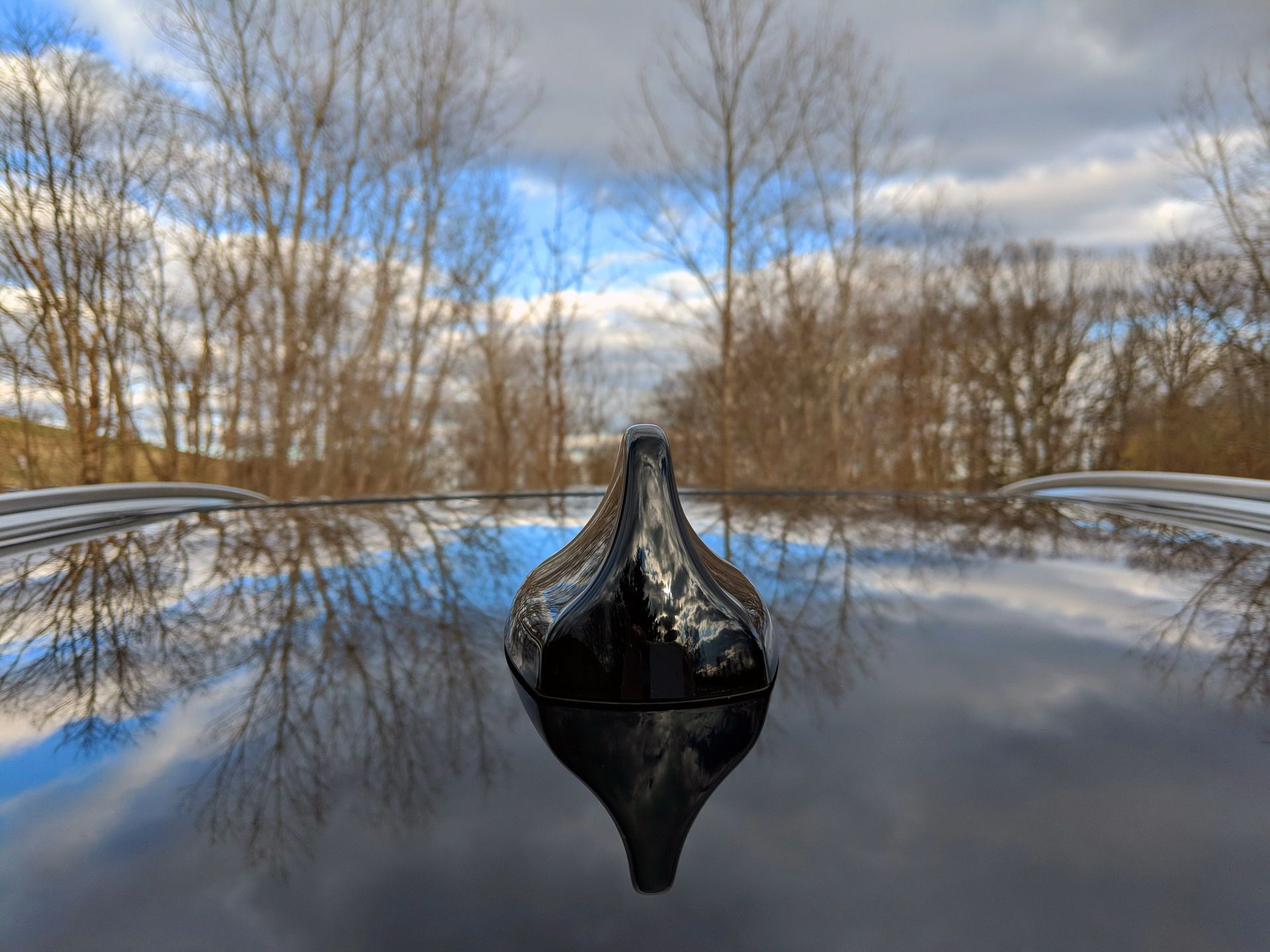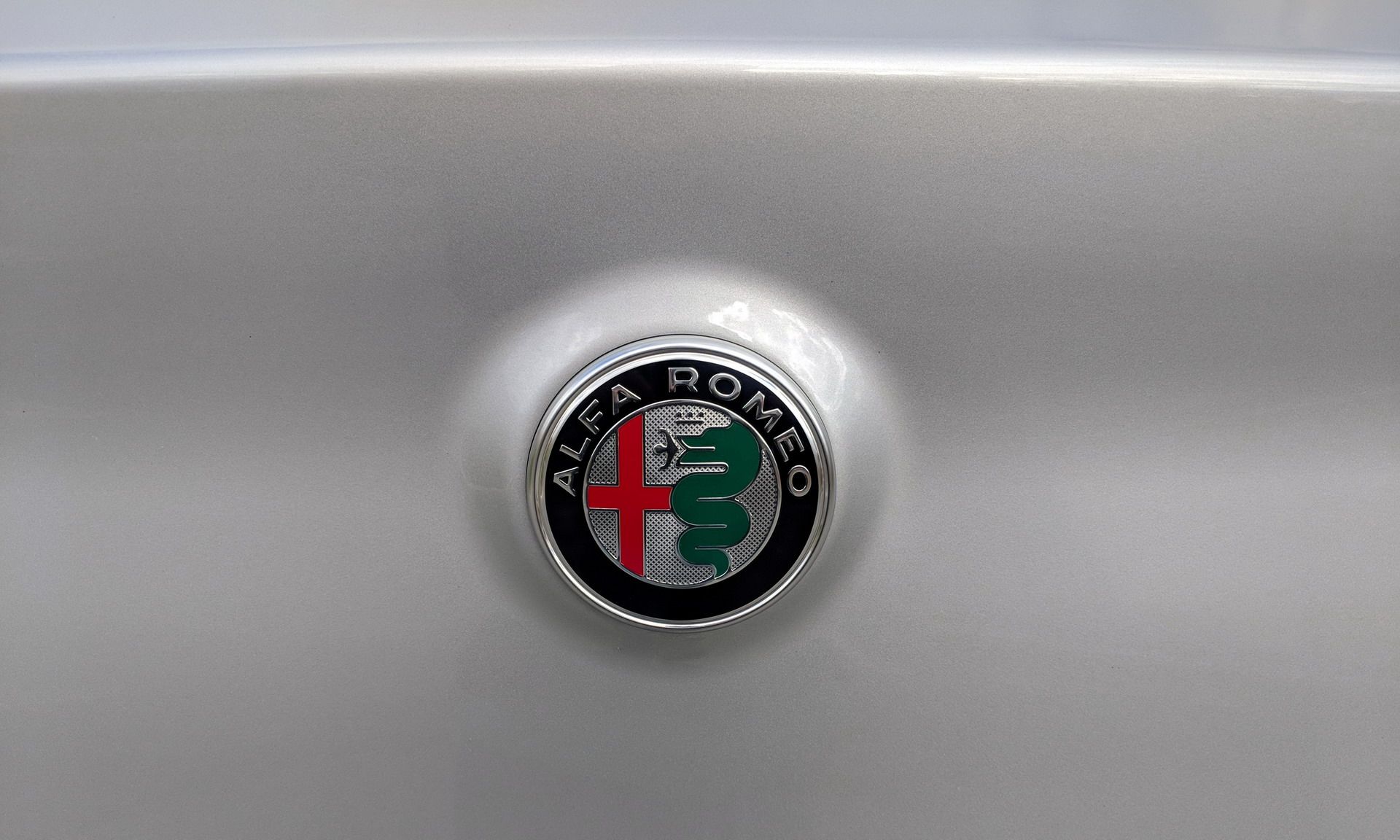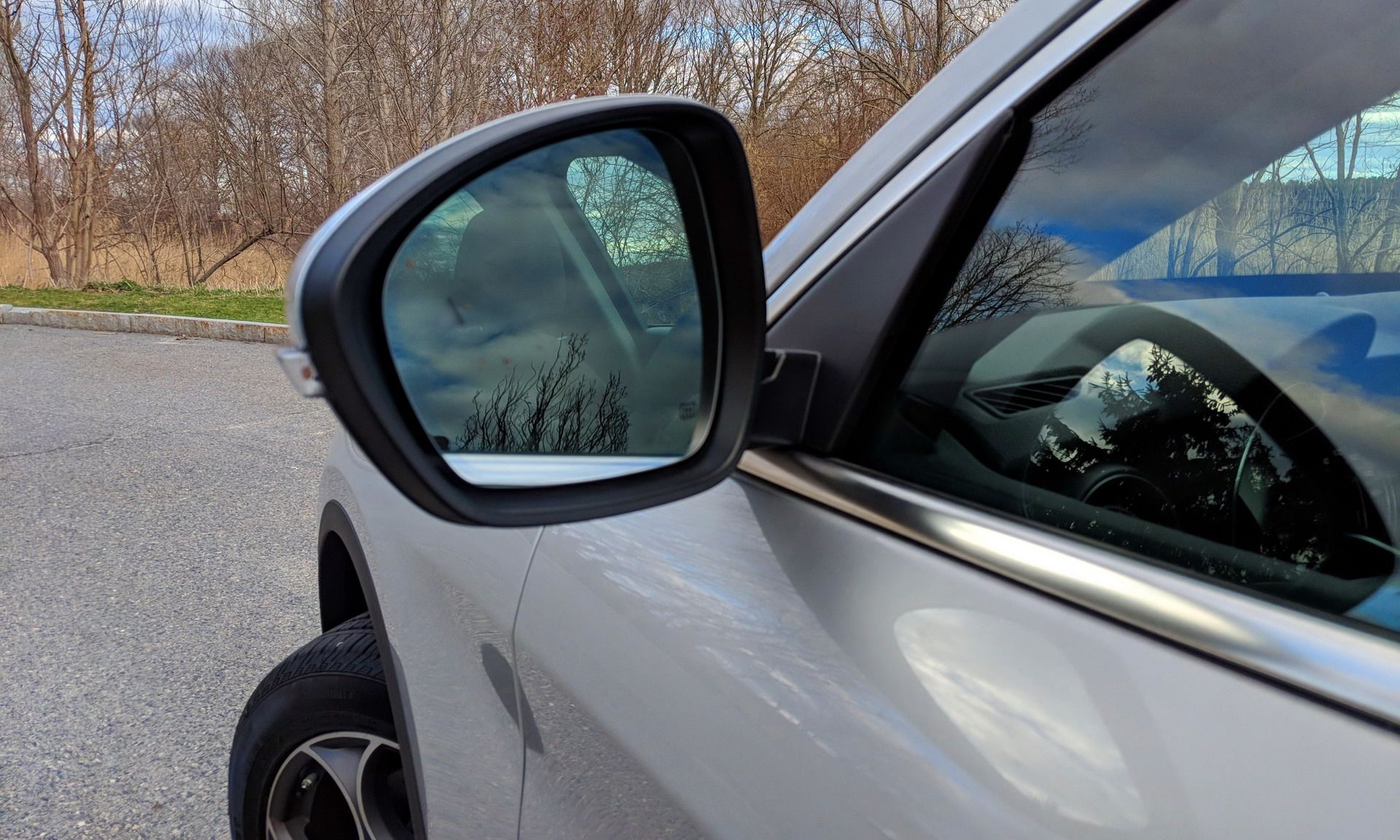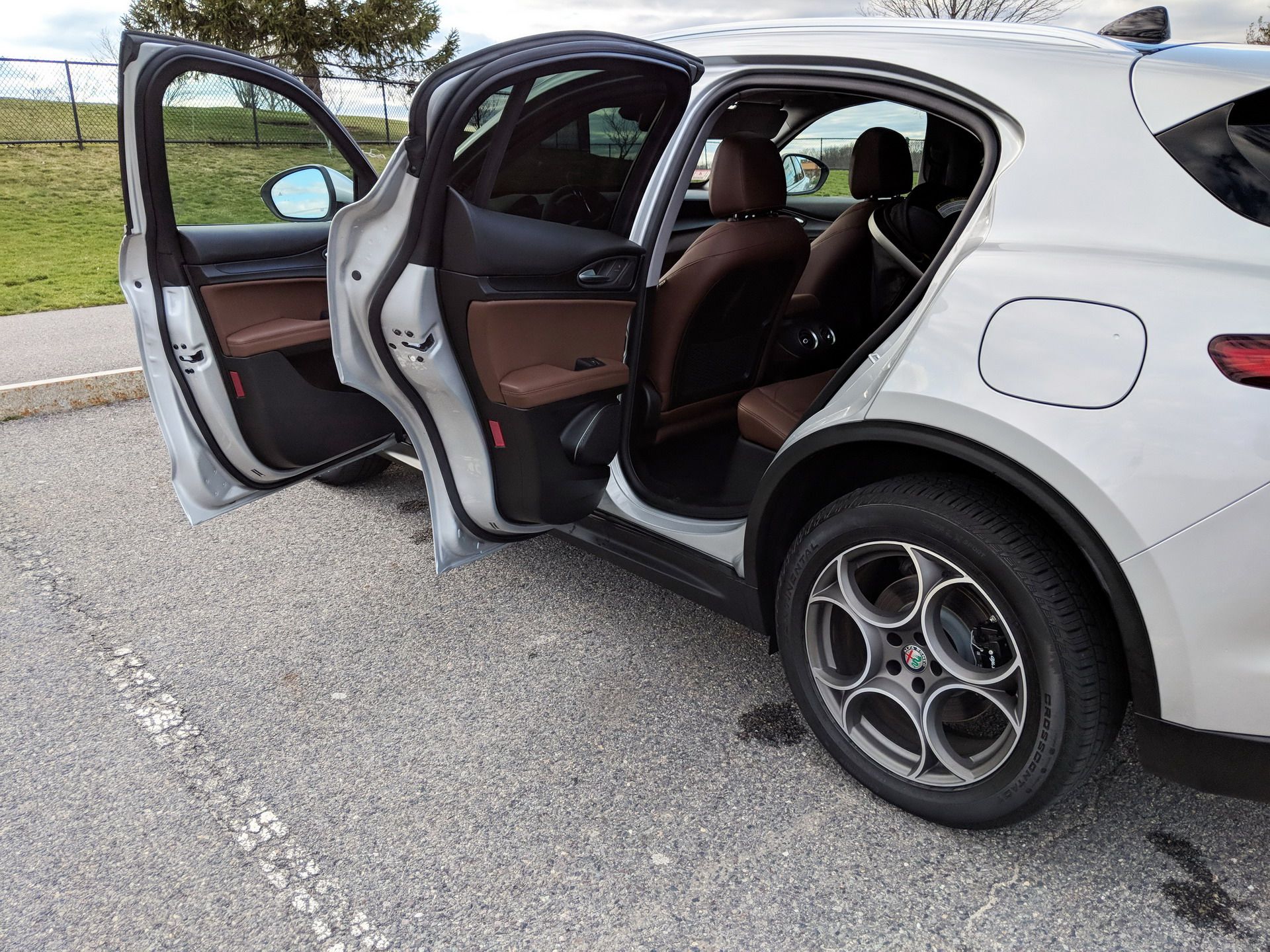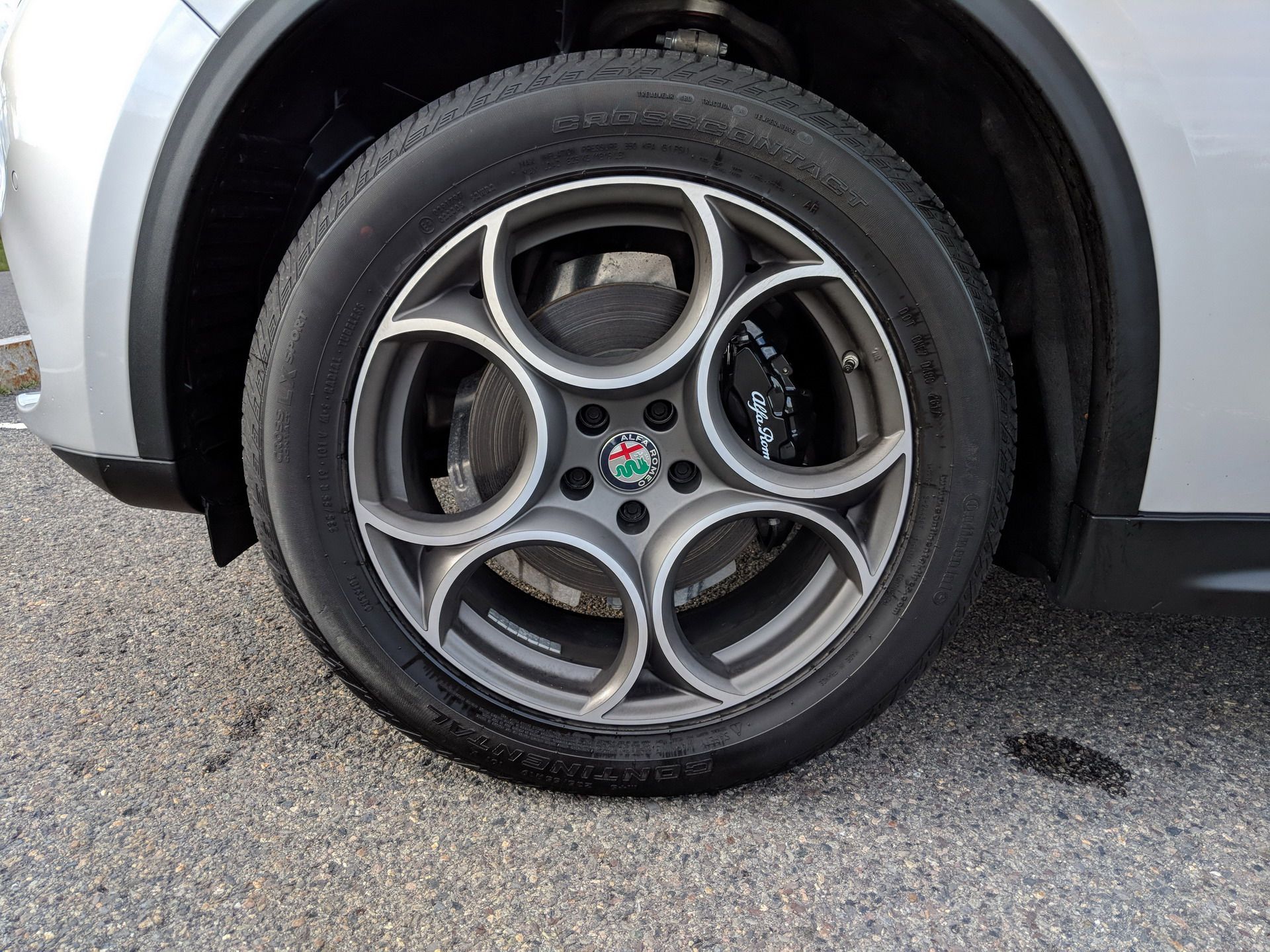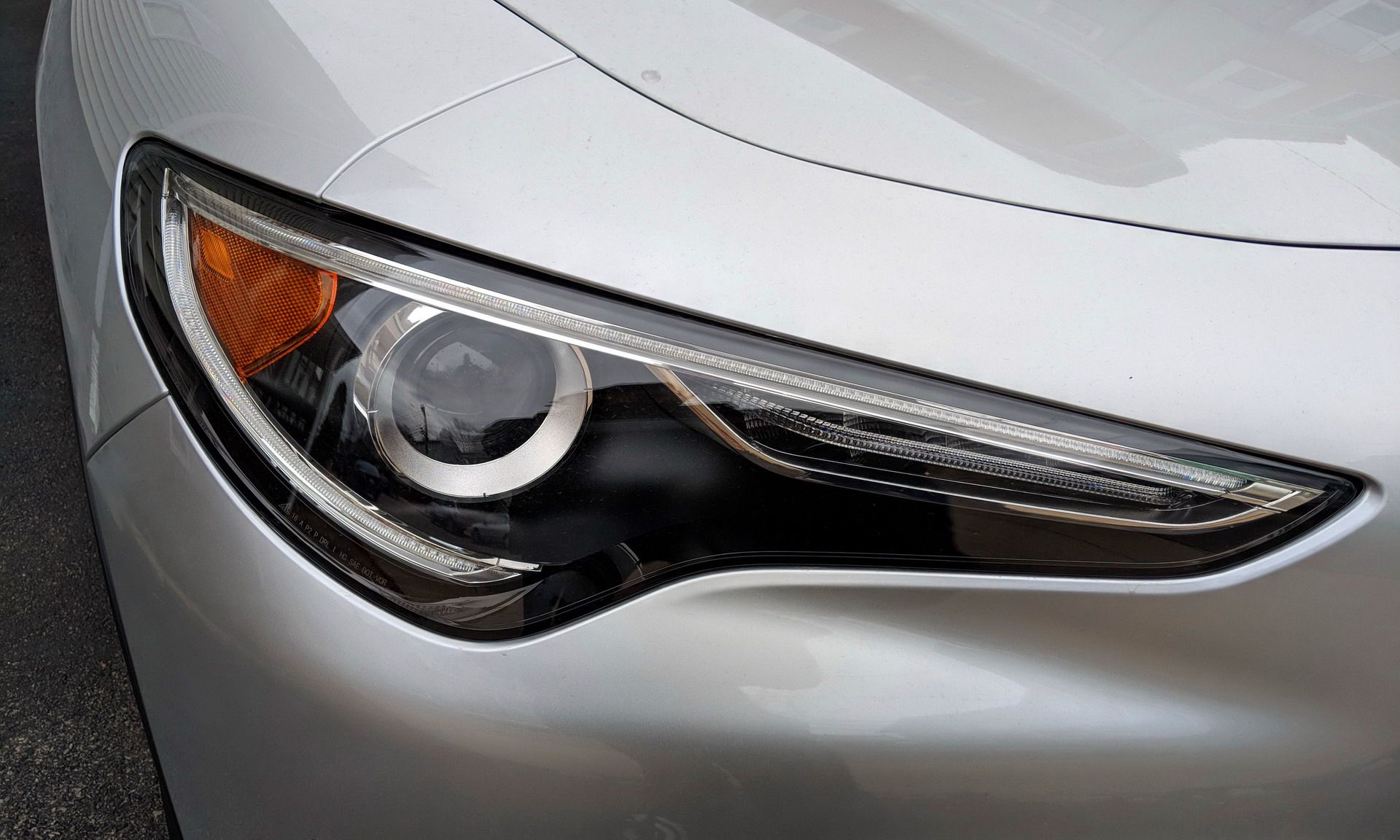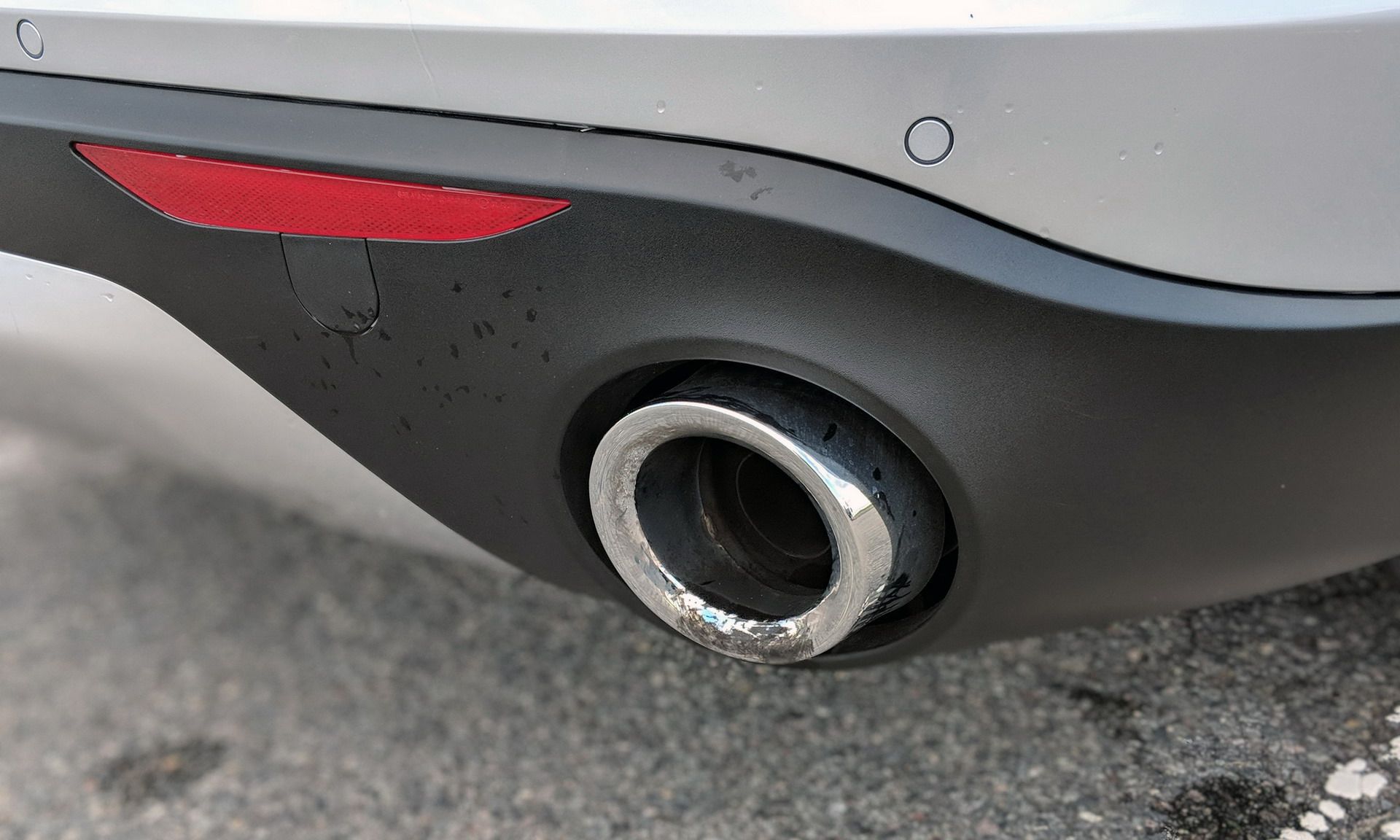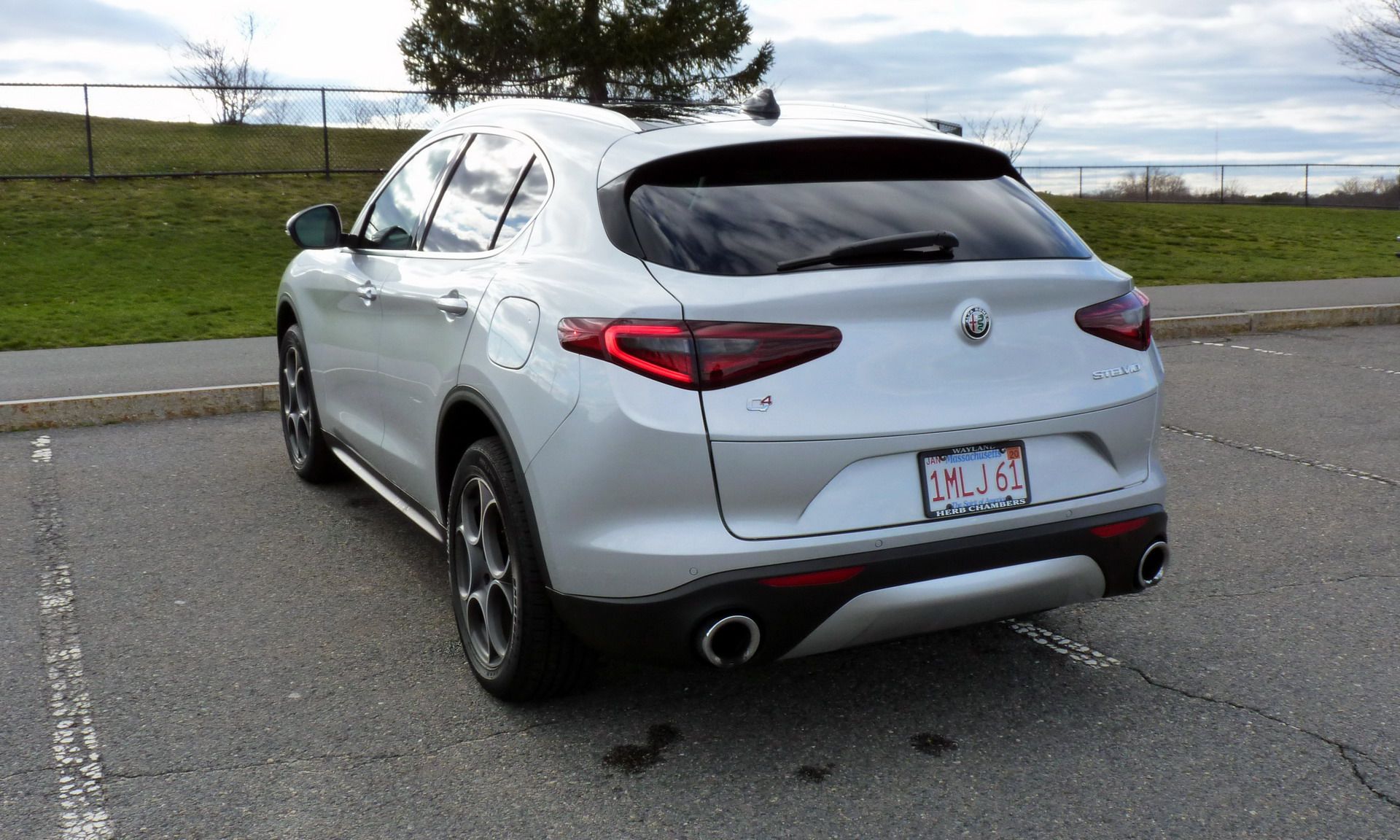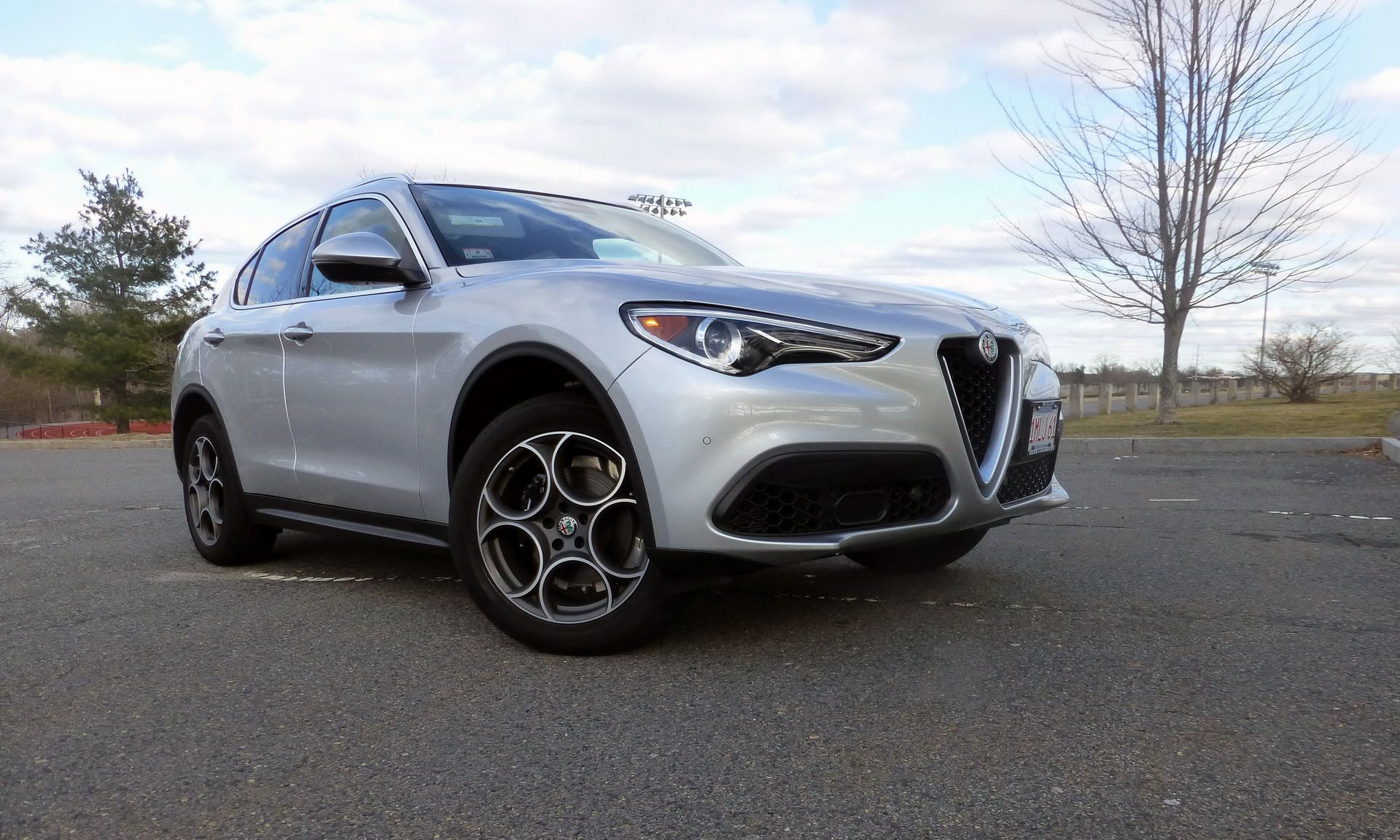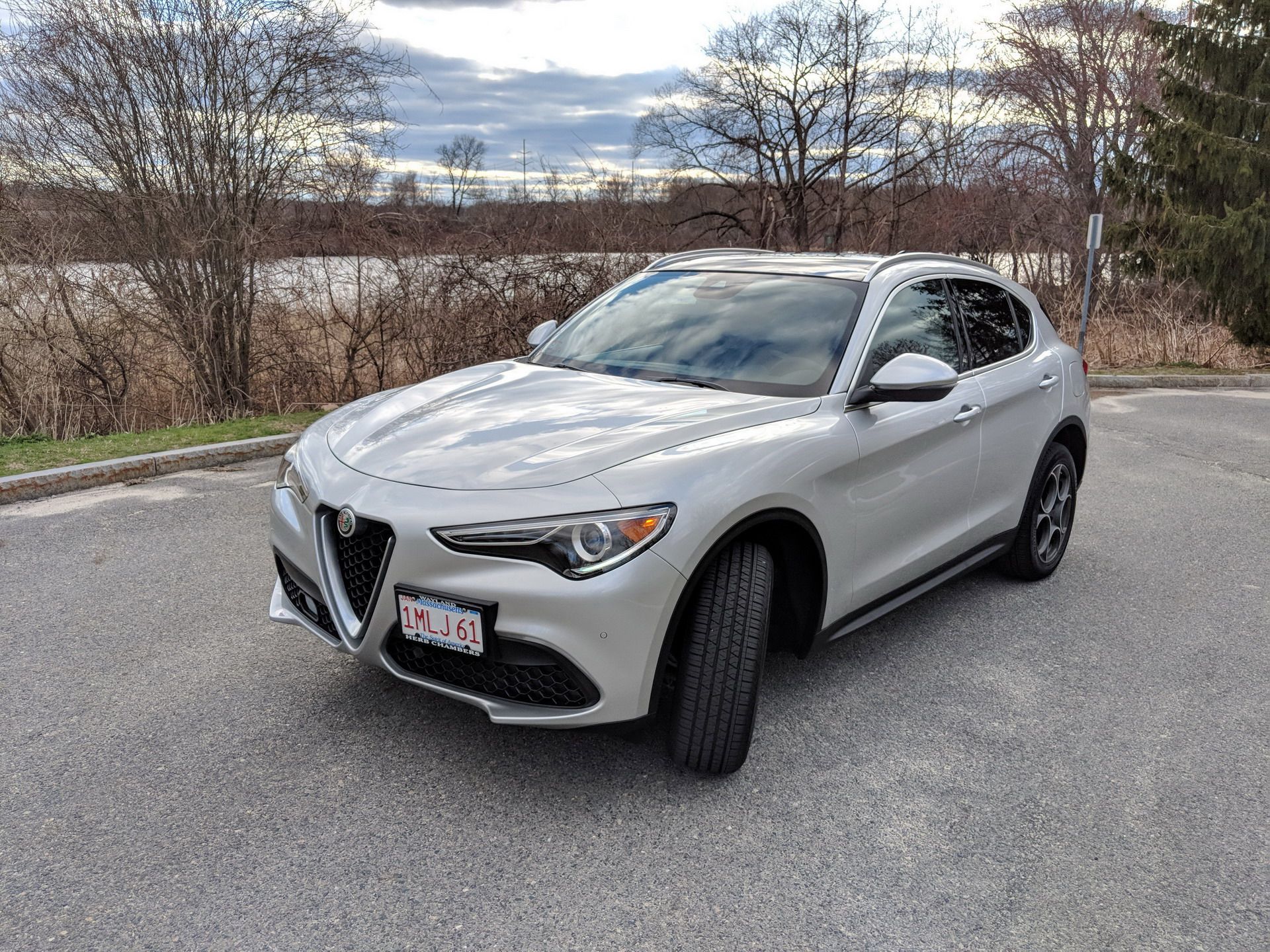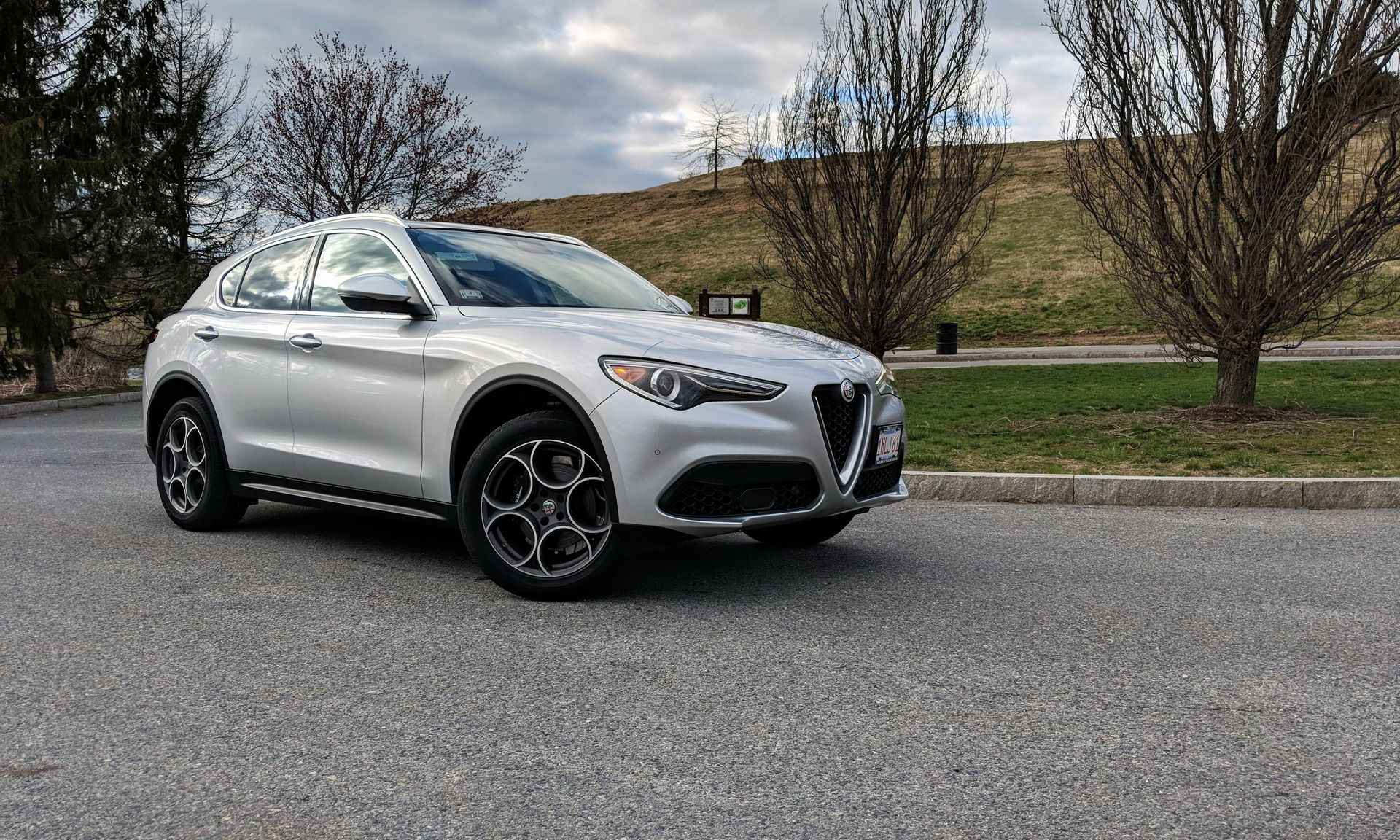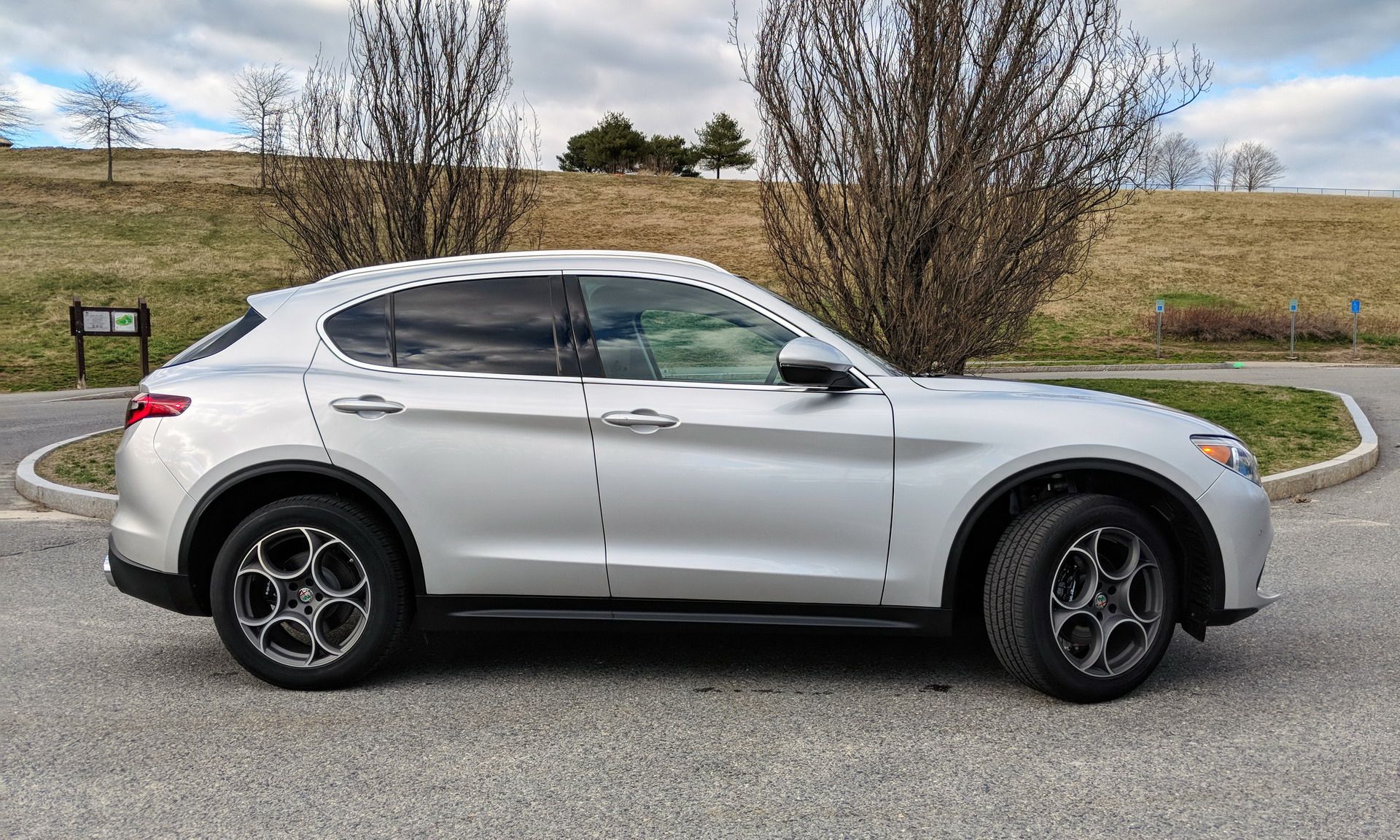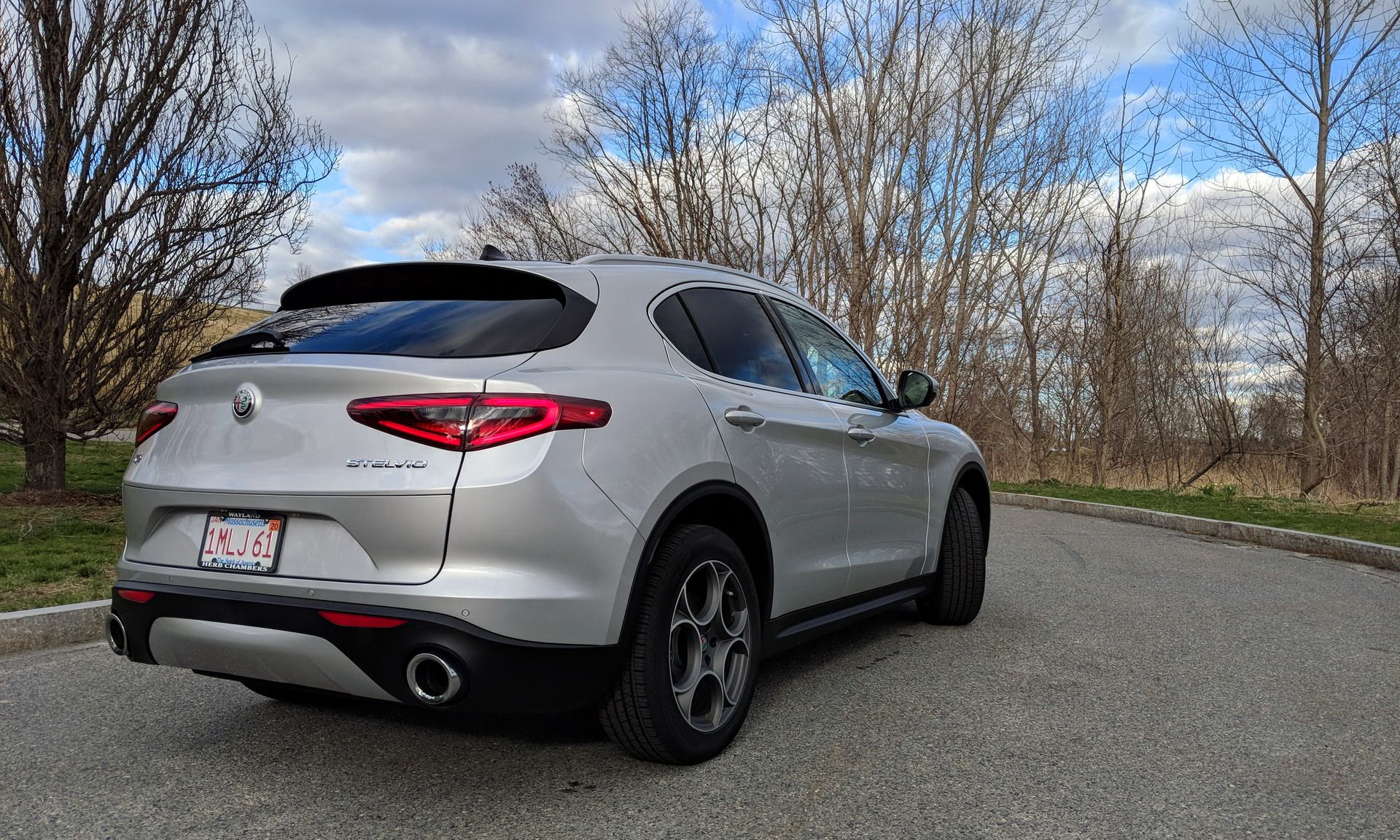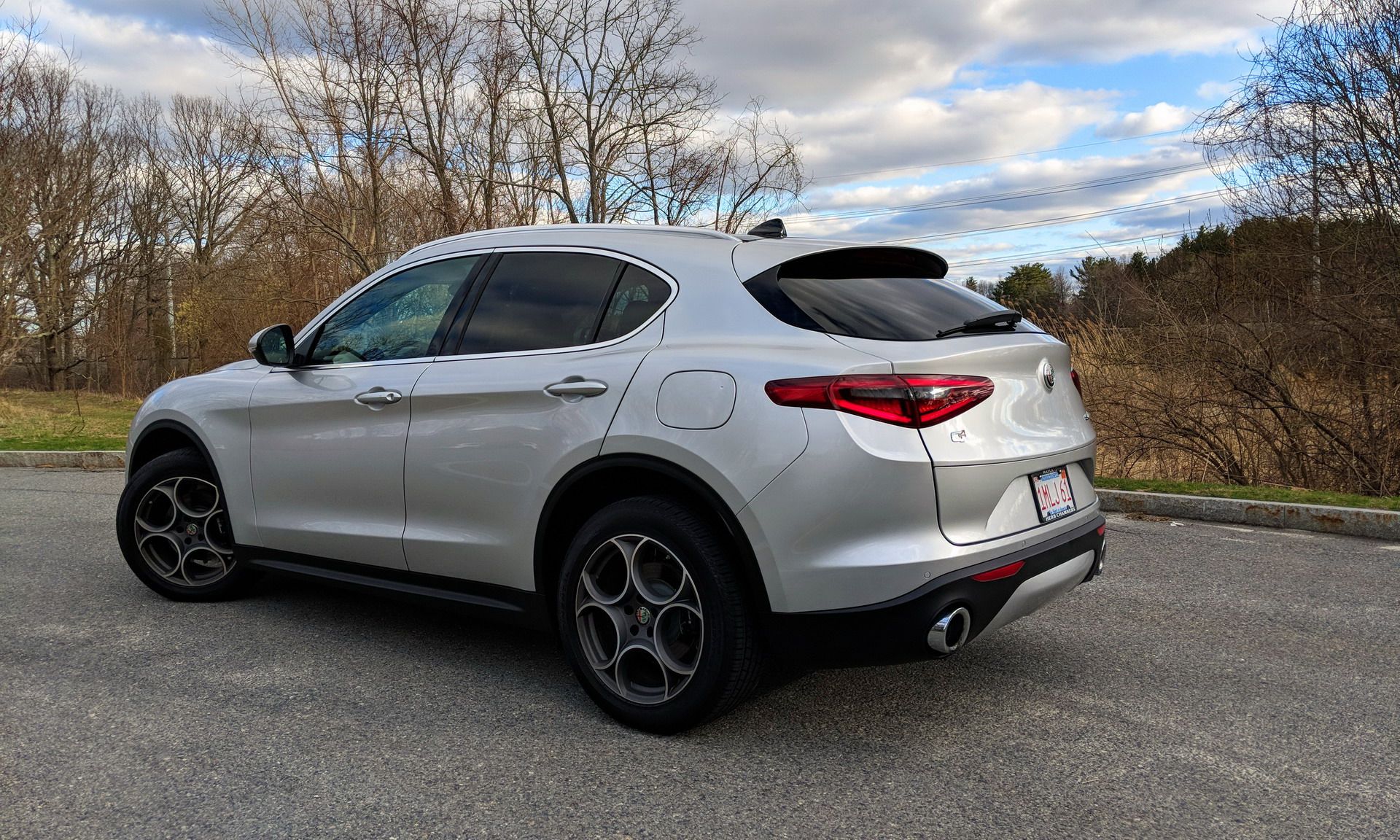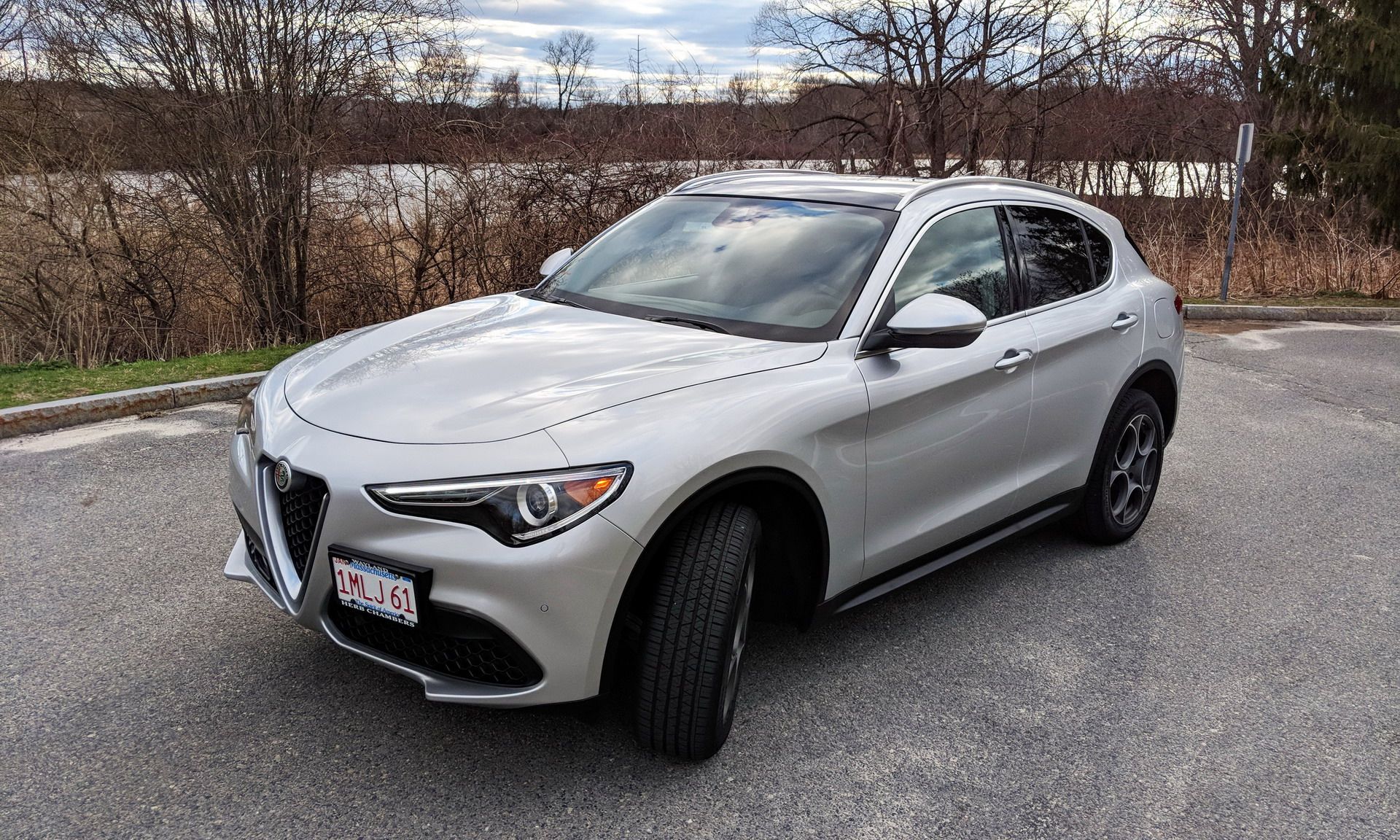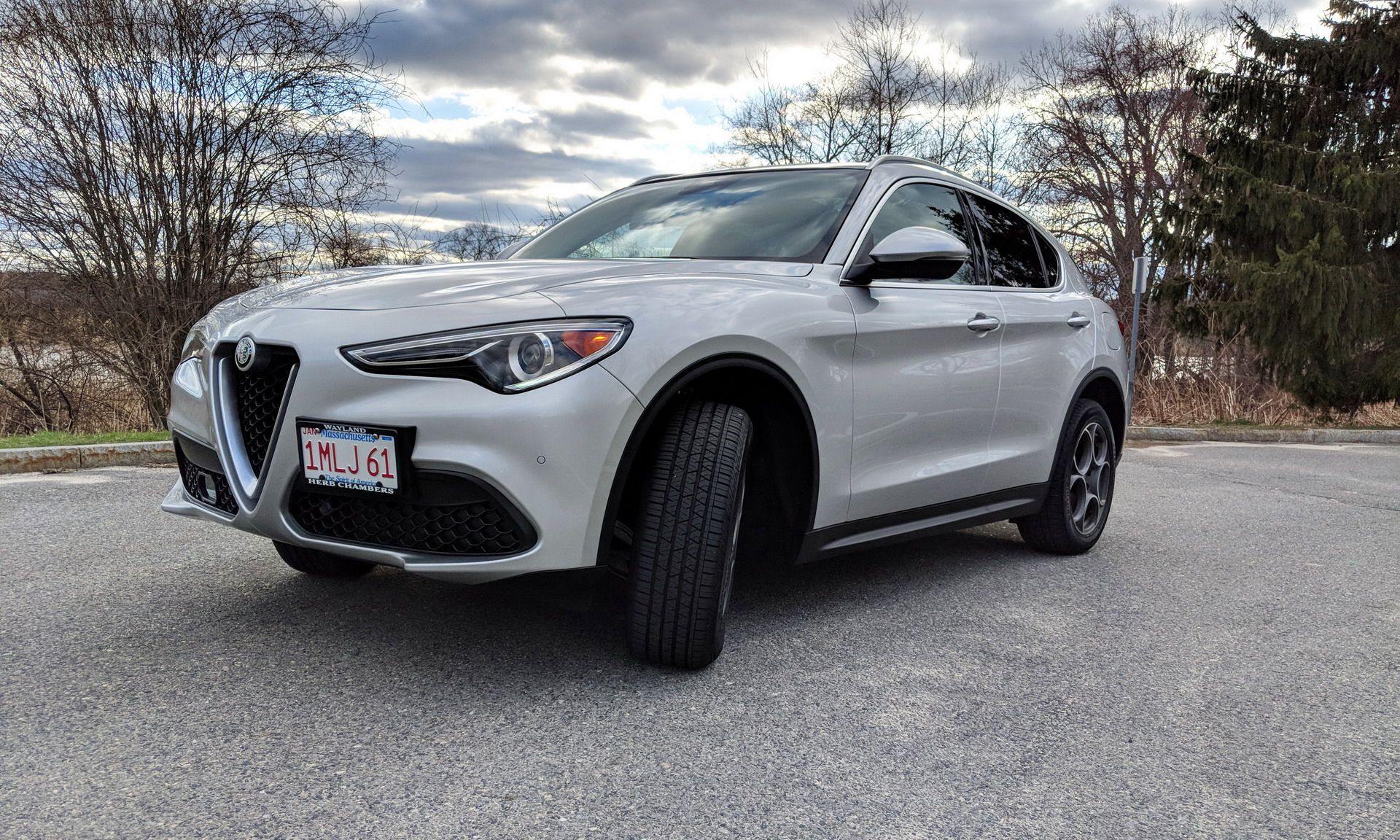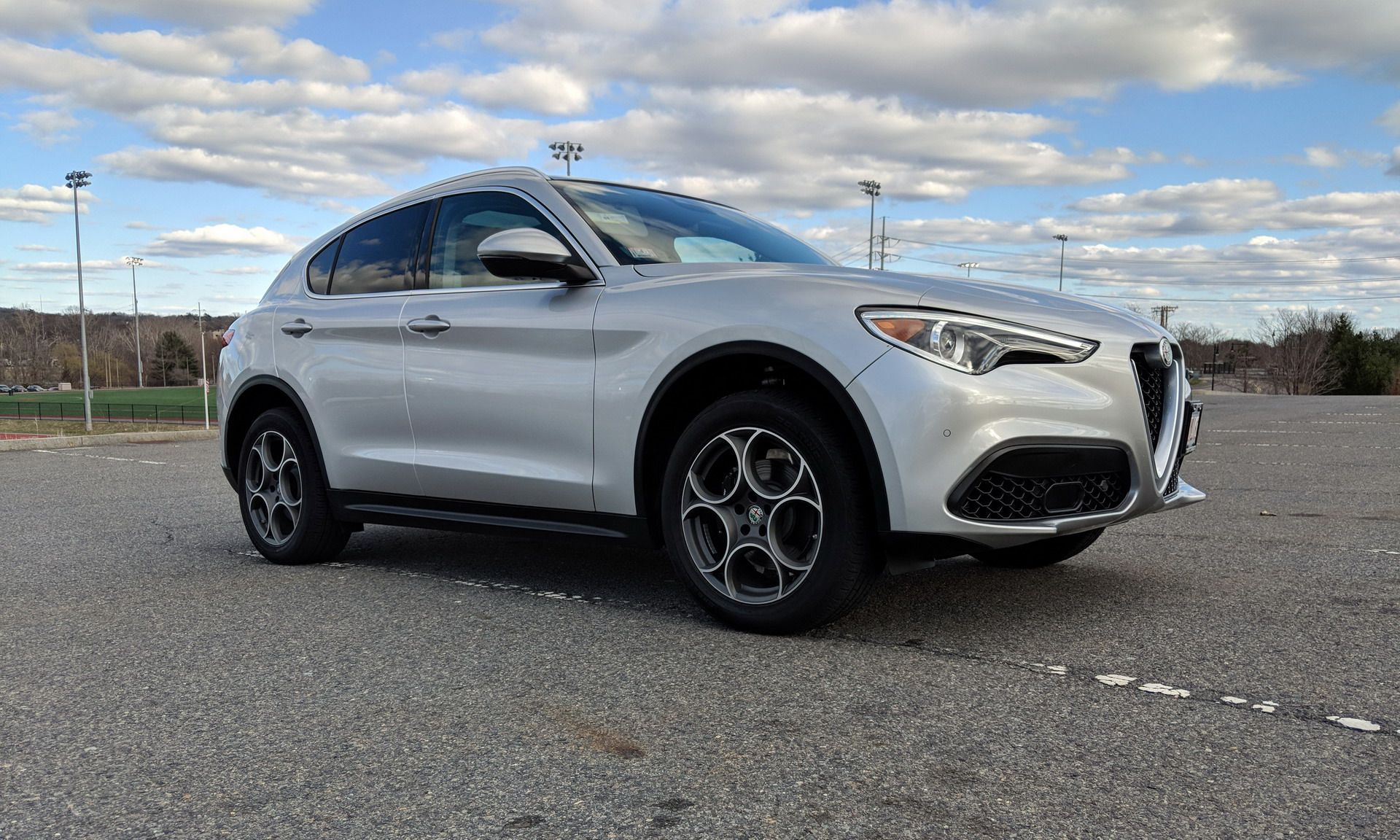Wind the clock back a few years and most weren’t even sure if Alfa Romeo would live on or if it would go the way of Lancia, let alone make it to the United States. Yet here we are today with Alfa having not one, but three models for sale in America, including its first crossover, the Stelvio, named for a mountain pass in Italy.
Now, we all know that in today’s hotly contested crossover market, slapping Alfa’s coat of arms on an attractive Italian suite wasn’t going to be enough if they wanted a fighting chance against the likes of tthe Audi Q5 and BMW X3. Fortunately for the Italians, they already had the blueprint with the Giulia sedan and let’s just say that the apple didn’t fall far from the tree.
We got our hands on the cooking version of the Stelvio fitted with a gutsy 2.0-liter turbocharged four-cylinder pumping out 276 horsepower (280 PS) along with 296 lb- ft of peak torque paired to a standard 8-speed automatic from ZF and all-wheel drive.
Before we delve into the Alfa crossover, we’ll remind you that this 2018 Stelvio 2.0T Q4 is our long-term tester, and besides our review, we’ll also be recording our findings during everyday use. With that out of the way, let’s see how this Italian-flaired SUV fits in America’s suburban life and whether it lives up to its name.
A big sports-hatch that happens to be an SUV
Henry Ford was posthumously attributed saying “When I see an Alfa Romeo go by, I tip my hat”. I don’t know if I’d enthusiastically tip my hat to the Stelvio, but it does get your attention in a very good way. By definition, SUVs (or generally speaking, crossovers) are not outright sexy. And how could they be with all that body heft and increased ground clearance? Yet somehow, Alfa’s approach that’s part curvy hatch, part muscular crossover ends up being pretty and more exotic than what its price tag from just under $42,000 would suggest.
Unlike many other crossovers out there, the Stelvio’s design is effortless. It doesn’t try to impress you with ugly generic styling trends that force a lasting impression on your retina with complex lines and details. It looks great from almost every angle, with an athletic profile and sculpted fastback rear and an even more impressive front that gives the impression it was milled from a single block of metal.
Stylish and functional cabin, with a few disappointing niggles
Step inside Alfa’s foray into the world of SUVs and after you’re done admiring the tasteful Italian design, you’ll notice that you’re sitting around six inches (150 mm) higher than the Giulia, but less so than other conventional SUVs. We appreciate the dashboard’s clean layout and styling zing that mimics the Giulia. It’s uncluttered and unobtrusive in a way that almost pushes you to focus on driving.
The Stelvio won’t amaze you with its passenger and boot space, nor with its fancy schmancy high-tech gadgetry. But it won’t disappoint either in any of those fields. Four adults will have ample space for their head and feet, just don’t expect to stretch out. A fifth middle passenger will have to deal with the elevated hump on the floor. The boot is on the smaller side at 19 cubic feet that rises to 56.5 cubic feet when you fold down the standard 40/20/40 rear seat back, but still marginally bigger than what you get on a Porsche Macan (17.7 ft³, 53 ft³).
Is everything else good?
Of course not. While some materials like the supple leather on the seats and the just plain gorgeous (and standard, yay!) flat-bottom steering wheel feel great, other materials and switchgear just aren’t on the same level as the (mainly German) competition. For example, the synthetic plastic on top of the dash and doors is soft to the touch but it has an off-putting weird reptilian look to it, while there’s a different soft touch plastic used on the bottom part of the dash, which actually works better for this theme.
We’re also going to castigate Alfa for the transmission shifter that’s plasticky and has sharp edges – as if someone forgot to sand down the imperfections. The wiper controls on the stalk and the knobs for the infotainment and DNA systems also feel flimsy and a bit rushed. You’d probably complain about these things in an economy car these days, let alone on a premium product with rivals that unremittingly raise the quality bar.
On a positive note, the ergonomics are, surprisingly for those with any kind of experience with 1980s Italian cars (roof console placed electric window buttons, anyone?), mostly sound, including the infotainment system, which we found fairly easy to navigate despite the laughably small and poor resolution rear camera – yes, it’s really that bad.
There are also plenty and big enough spaces to store your things inside, something we can’t say about the Giulia. A couple of quarrels we have are with the sunroof buttons and wiper options that can be confusing, and to a lesser extent, the all-white engine temperature and fuel levels.
Cabin noises are limited, with the exception of the door mirrors that like to squabble with the wind at highway speeds. And oh, that curvy rear window might look pretty and petite on the outside, but in combination with the rear headrests and thick side pillars, it’s a pain in the arse when you’re trying to check back.
Will it make you sing Mama Mia on the road?
Let the drum-roll begin: the short answer is yes, the Stelvio is a true Alfa Romeo behind the wheel. Here’s the longer version. Sharing its Giorgio platform with Alfa’s own Giulia as well as current and future Maseratis, the Stelvio has a solid foundation and it makes the best use of it. The aluminum-intensive architecture that includes things like composite rear cross member and carbon fiber driveshaft results in a low weight of 4,044 lbs or 1,834 kg for the North American specification model (the Euro version is listed even lower at 3,670 lbs or 1,660 kg) further aided by a 50/50 weight distribution.
It only takes a few miles to see that the Italians hit the nail on the head when it came to driving dynamics. Of course, the high center gravity means it’s not as good as the Giulia, but it comes close enough for anyone tempted to trade some (and not a lot) handling prowess for practicality and/or fashion reasons (let’s face it, SUVs are an enduring consumer trend). This is a genuine Alfa on the road that can often make you forget you’re behind the wheel of an SUV. And that’s where it really shines against most of the competition, especially at this price point.
We were actually surprised at how nimble and balanced it felt for a crossover, even without the optional sport suspension with adaptive dampers. It rides on the firmer side but has a fairly compliant suspension (on 19s) to road imperfections under normal driving conditions.
The fact that the standard electronic Q4 system borrowed from the Giulia predominantly sends torque to the rear axle, unless it detects the need for more traction, in which case it can send up to 50% of the drive to the front, makes it even the more enjoyable.
The car’s rack-and-pinion steering with variable electric assist is borrowed from the Giulia too. It’s precise and super quick, if a bit less talkative than Alfa’s sedan, while feel is on the limited side, albeit better than what you’d get from a BMW 3, for example. The Stelvio’s new brake-by-wire system with standard Brembo four-piston front and single-piston calipers at the rear is grabby giving you plenty of confidence. It does take some time getting used to it, but once you get the hang of it, it feels linear, albeit with shorter travel than what you’re probably accustomed to.
Whatever Stelvio you pick, you get three driving modes: Dynamic, Natural, and Advanced Efficiency. The system is called “DNA” and it alters the response of the 8sp automatic, steering and braking system, engine map, stability control (it can’t be entirely deactivated) and Q4 all-wheel driveline. Natural gives you the smoother ride and control you expect from a crossover, while Advanced Efficiency puts the car in a snooze mode as it tries to optimize fuel economy in the expense of your patience. As for Dynamic mode, it makes it feel feistier in your hands (and foot).
It’s plenty fast for even an enthusiastic driver
If you can’t afford the $80,000 price tag of the Ferrari-tuned V6 in the Quadrofoglio, your only engine option on the Stelvio in North America is a 2.0-liter turbocharged four-banger backed by a standard 8-speed automatic from ZF. But that’s not a bad thing.
Despite lacking in cylinder count, the turbocharged engine suits the car very well producing a characteristic subdued growl with a few crackles here and there to go with its 280PS (276hp) at 5,200 rpm and 296lb ft between 2,000 and 4,800 rpm. There’s a slight turbo lag, but nothing annoying, with the four-pot really picking up the pace after 2,000 rpm and nearly all the way to the rev limiter. Make no mistake; this thing flies without getting you seasick with a manufacturer claimed 0-60mph in 5.4 sec or 0-100km/h (62mph) in 5.7 sec and a top speed of 144mph or 232km/h.
During our test, we managed an average of 19.5mpg (12.0l / 100km) in the city and 27.0 mpg (8.7 l/100km) on the highway using all driving modes. The EPA has the Stelvio 2.0T listed at 22mpg city, 28mpg highway and 24mpg combined.
Our tester’s MSRP and equipment
Our base spec model is fitted with a few extras such as 19-inch wheels, infotainment system with the smaller 6.5-inch screen, panoramic sunroof and driver assist systems, finished in Silverstone Grey with a chocolate and black interior. Standard equipment is plentiful and includes 18-inch wheels, LED front and rear lights, dual zone climate control, a bunch of airbags, flat-bottom sports steering wheel and real leather for the seats and door panels. The base MSRP was $41,995 but if you add those extras and the $995 destination fee, it goes up to $49,335.
Who are its main competitors?
The Stelvio will be cross-shopped by buyers mostly looking into premium European and to some extent, Japanese cars too, including the usual suspects like the BMW X3 and X4, Porsche Macan, Audi Q5, Mercedes GLC and GLC Coupe, Infiniti QX50, and Jaguar F-Pace. It might also draw attention from the uninitiated to the Alfa Romeo brand but versed enough tell an F-Sport apart from a base model.
Will Alfa’s past haunt the Stelvio?
Having a, let’s just say, rocky past, especially in North America, it’s reasonable that less enthusiastic drivers might be unsure about Alfa’s reliability and quality. But the bigger question in our book is how FCA will handle any problems that may arise and whether it can cater to a crowd that has been spoiled for choice by luxury brands in the States. That’s something we will look into during our long term test, so check this space in the coming weeks.
Love it or hate it, and should I get it?
If we had to weigh everything on a scale, we’d say it would easily tip towards liking this modern Alfa a lot. We’re not crazy in love with it and do have a few complaints, but at the end of the day, the Stelvio, even with the small four pot, will manage to cover 70-80 percent of your (reasonable) enthusiast wants along with 70-80 percent of your (again, reasonable) family needs. That’s something not a lot of cars, regardless of body style and category, can claim in this price range, let alone SUVs.
And with station wagons being a dying breed here in the States, this Alfa might soon be the only or one of few practical five-door family-sized cars catering to the enthusiast on a reasonable budget. Now, if terms like “driving dynamics” and “performance” sound gibberish to you, there are probably better all-around (and roomier) proposals to look at.
| 2018 Alfa Romeo Stelvio 2.0T Q4 | |
|---|---|
| Prices | |
| Starting MSRP | $41,995 + $995 Destination Charge |
| As Tested | $49,335 |
| Powertrain | |
| Engine | 2.0-liter Turbocharged four-cylinder |
| Transmission | 8-speed automatic |
| Drivetrain | AWD |
| Power / Torque | 276hp (280PS) @ 5,200 rpm | 306 lb.-ft. (415 Nm) @ 2,000 – 4,800 rpm |
| Performance* | |
| 0-60mph | 5.4 sec (0-100km/h: 5.7 sec) |
| Top Speed | 144mph | 232km/h |
| EPA Fuel Economy (city/highway/combined) | 22mpg / 28mpg / 24mpg |
| Dimensions | |
| Length / Width / Height | 184.6 / 74.9 / 66.0 in. (4,688 / 1,903 / 1,677 mm) |
| Wheelbase | 111 in. (2,818mm) |
| Cargo Volume Min-Max | 19 – 56.5 cu ft (538 – 1,600l) |
| Weight | 4,044 lbs (1,834kg) |
| * Manufacturer | |




